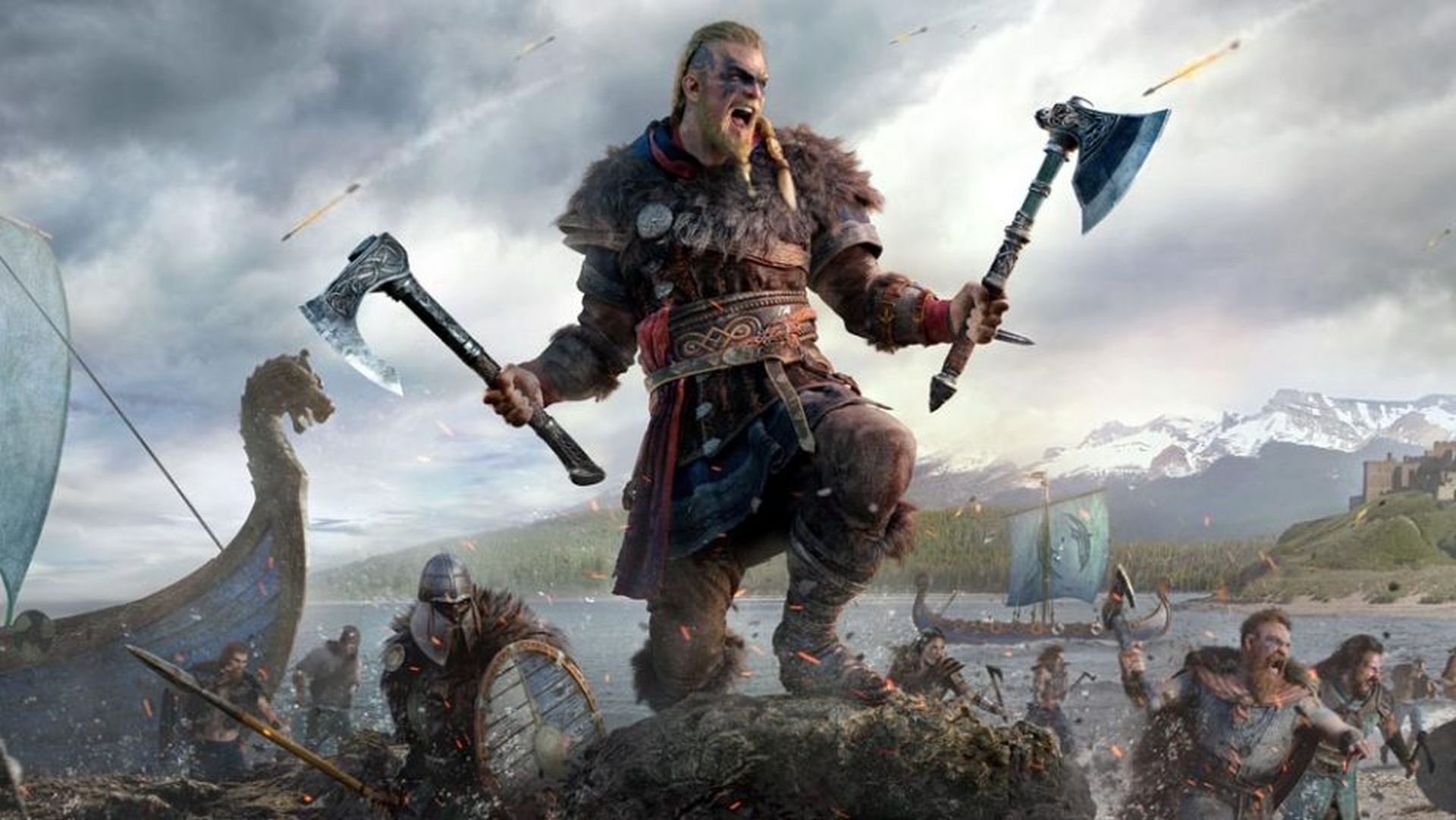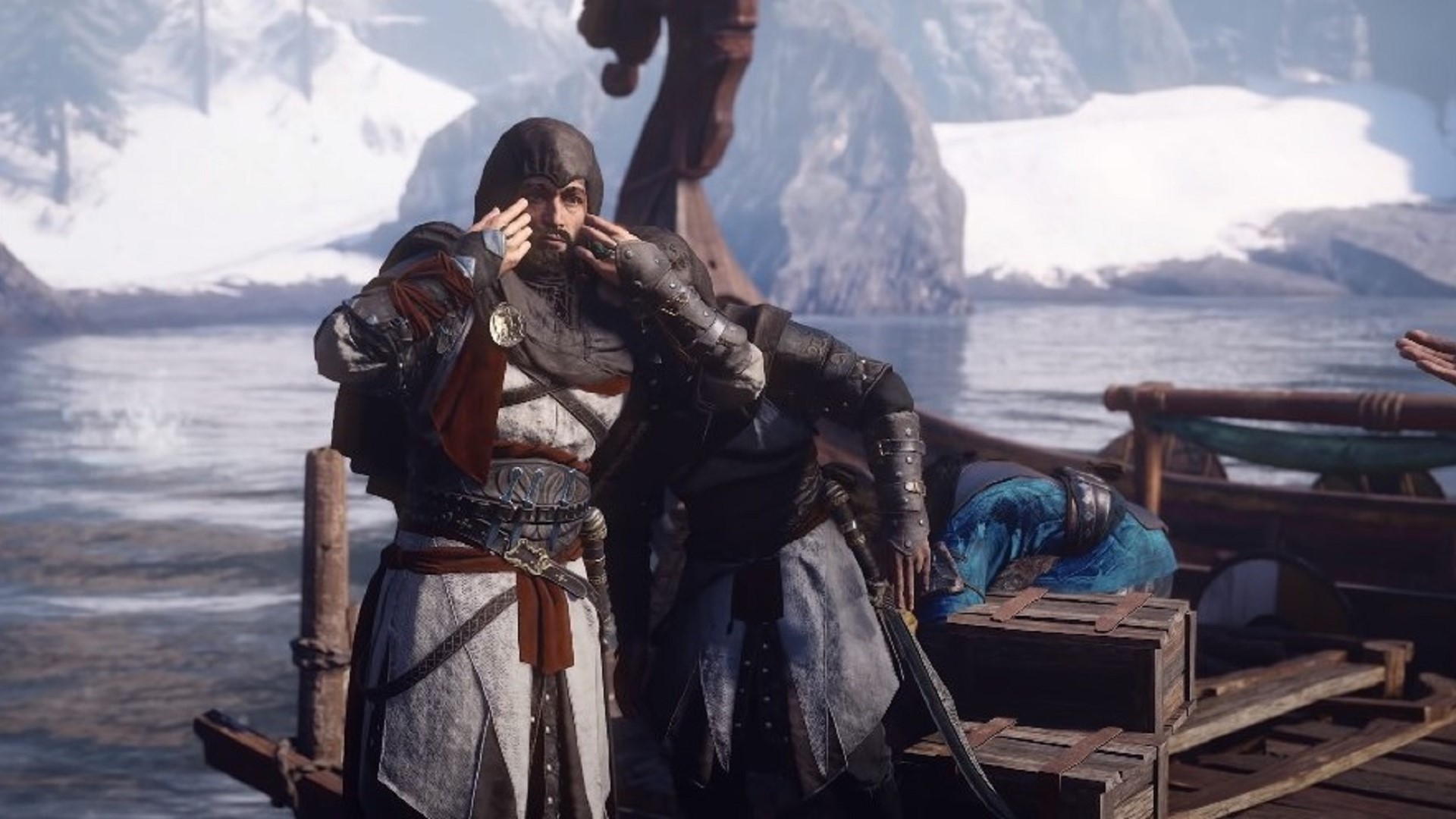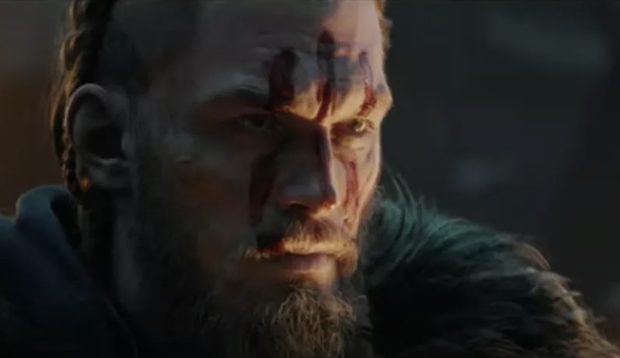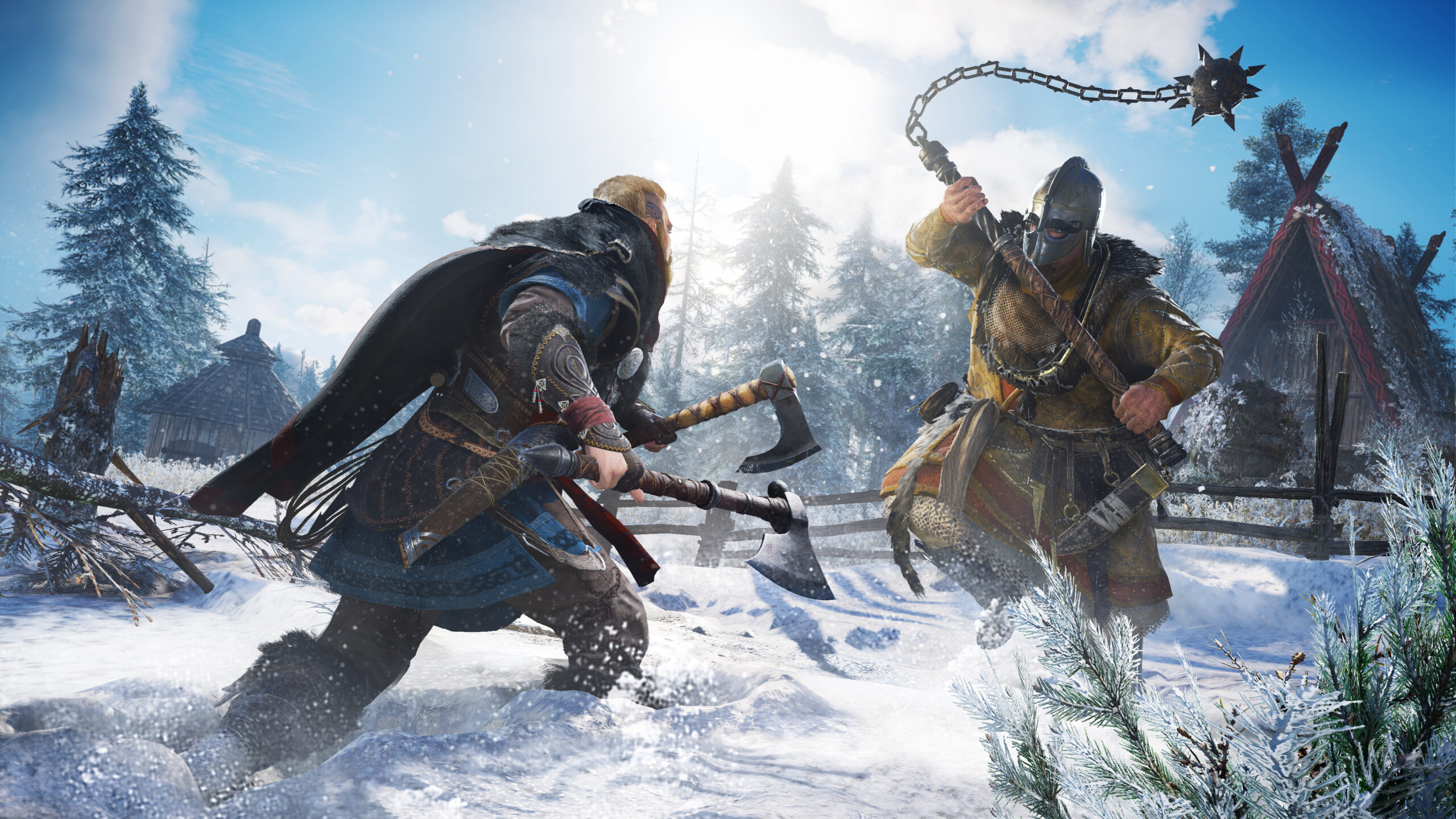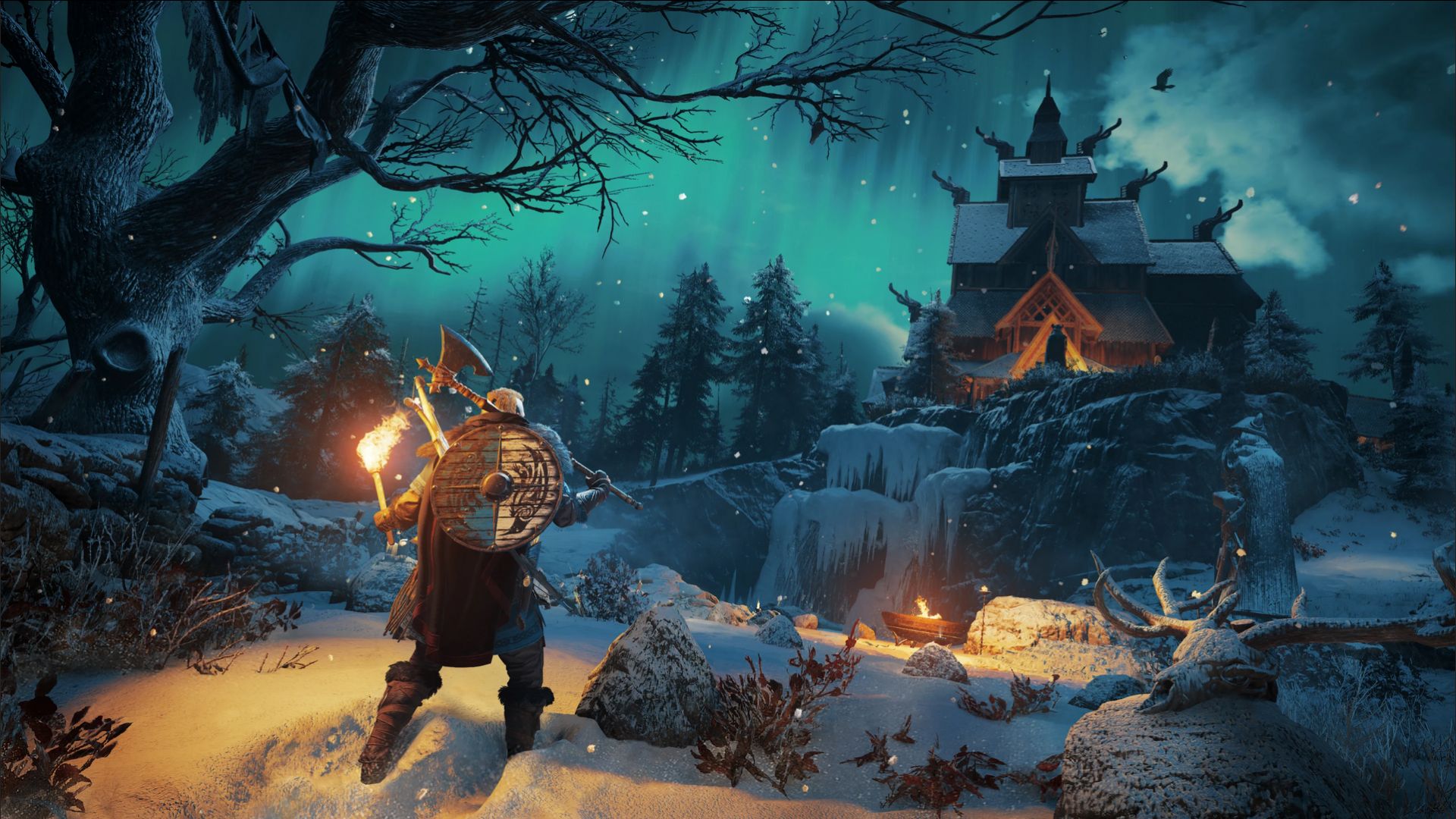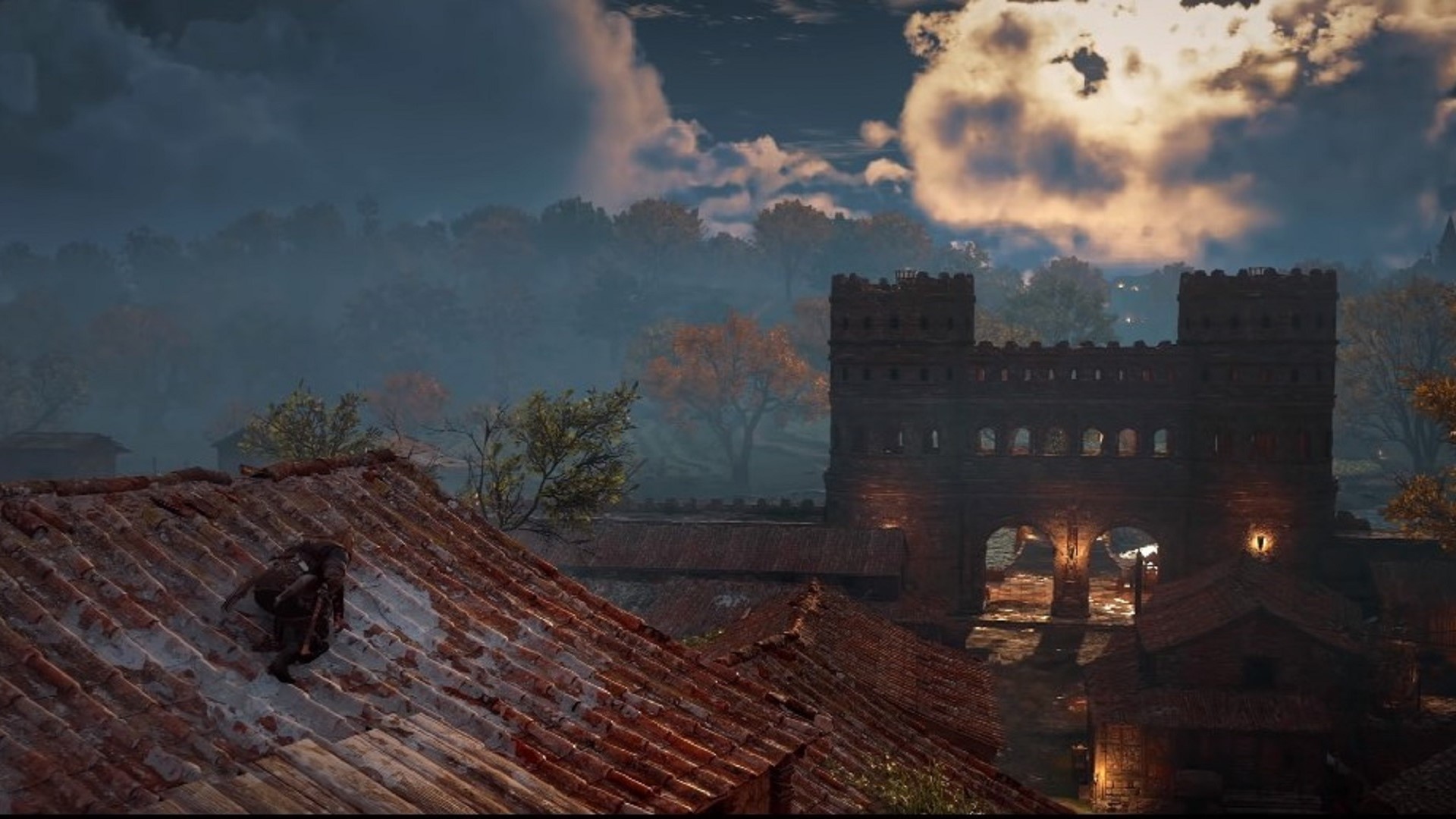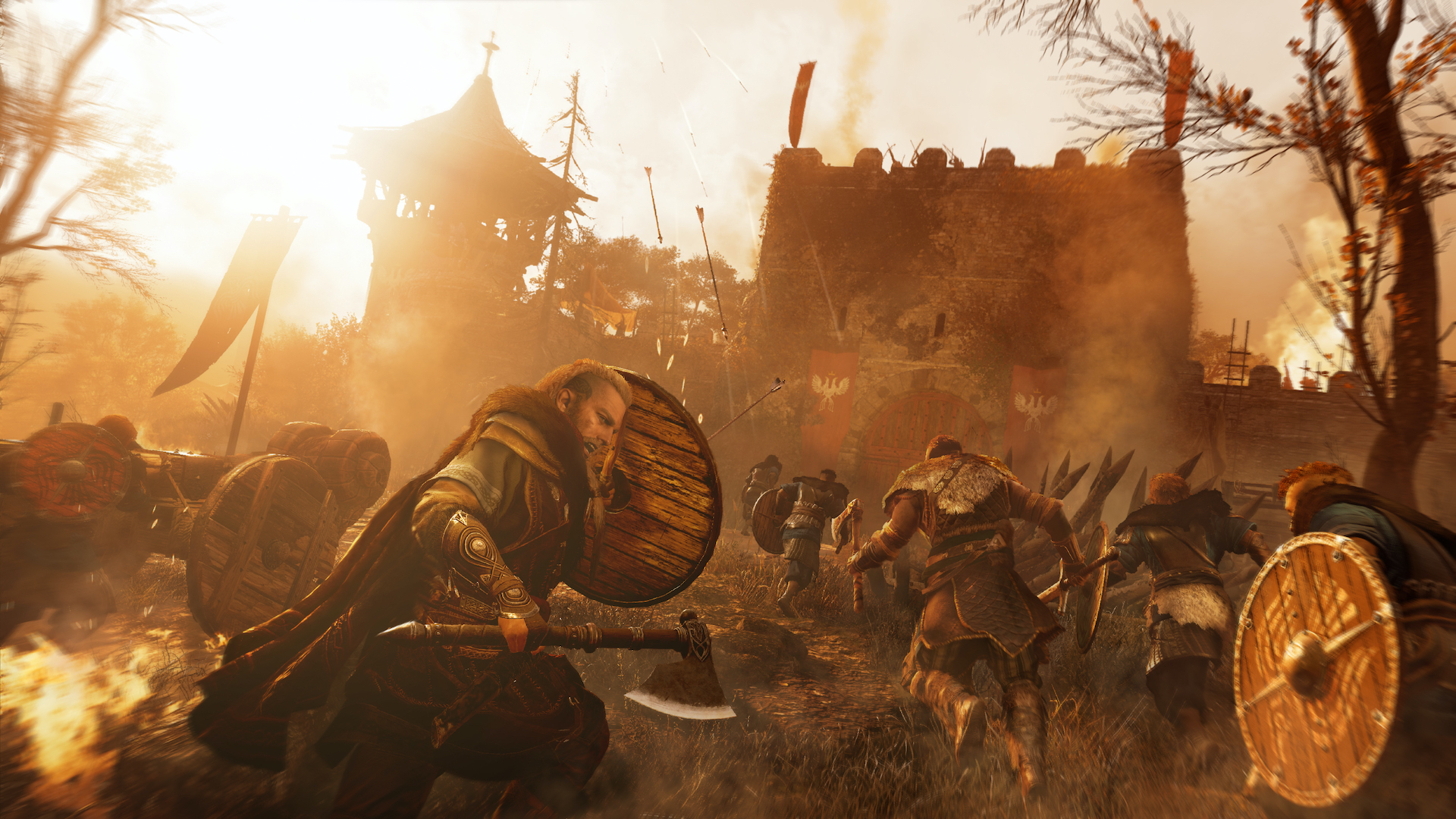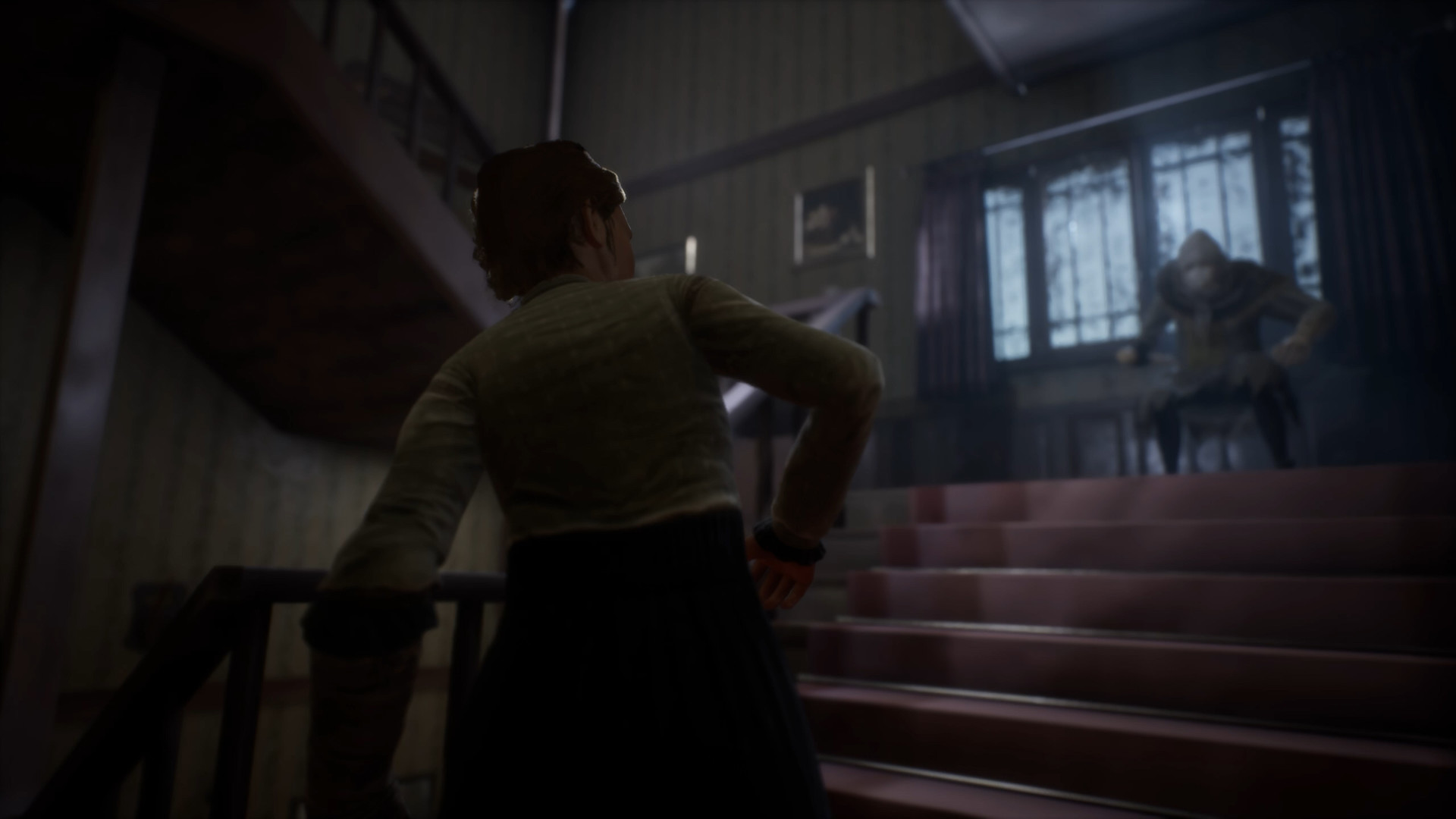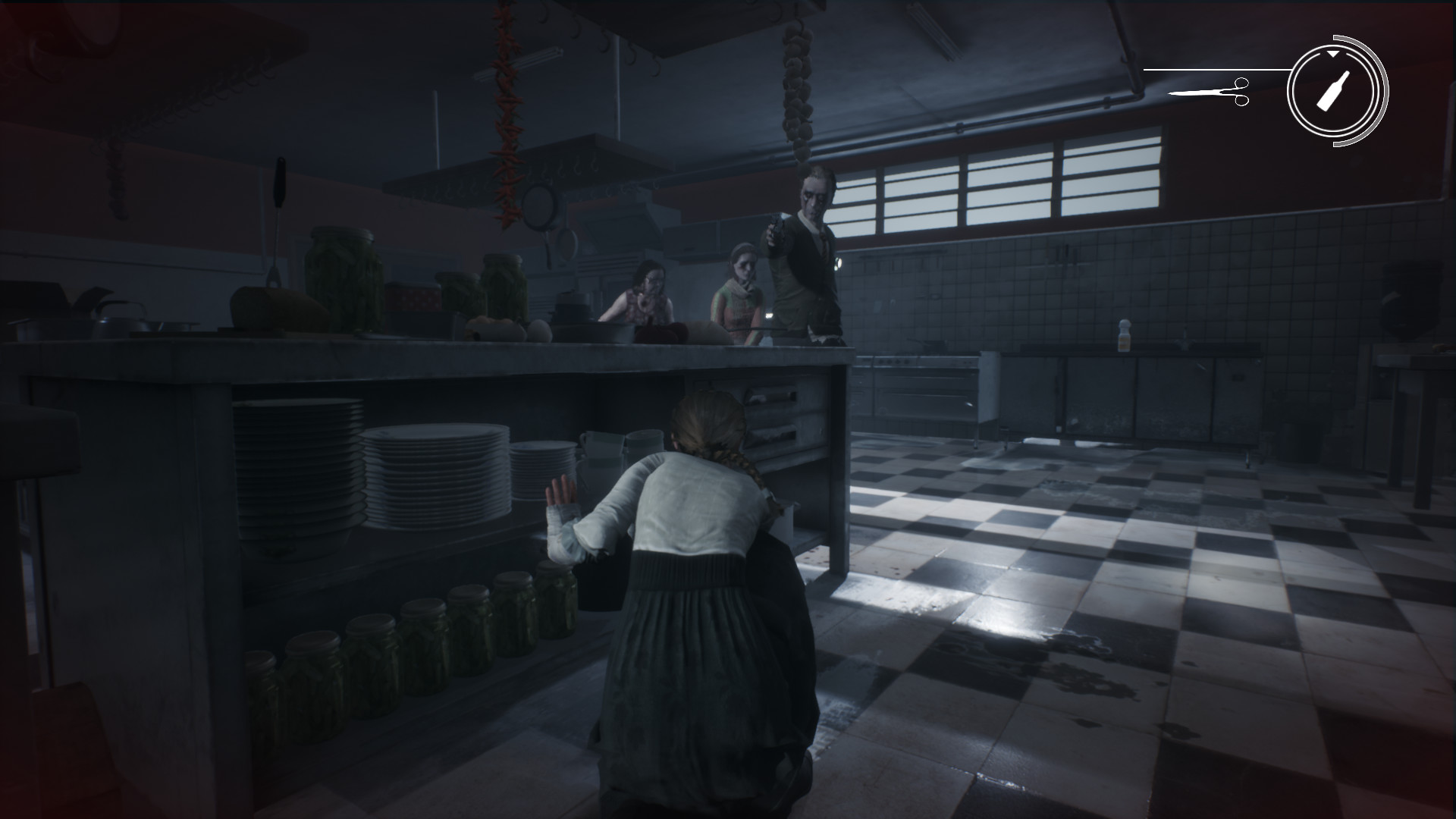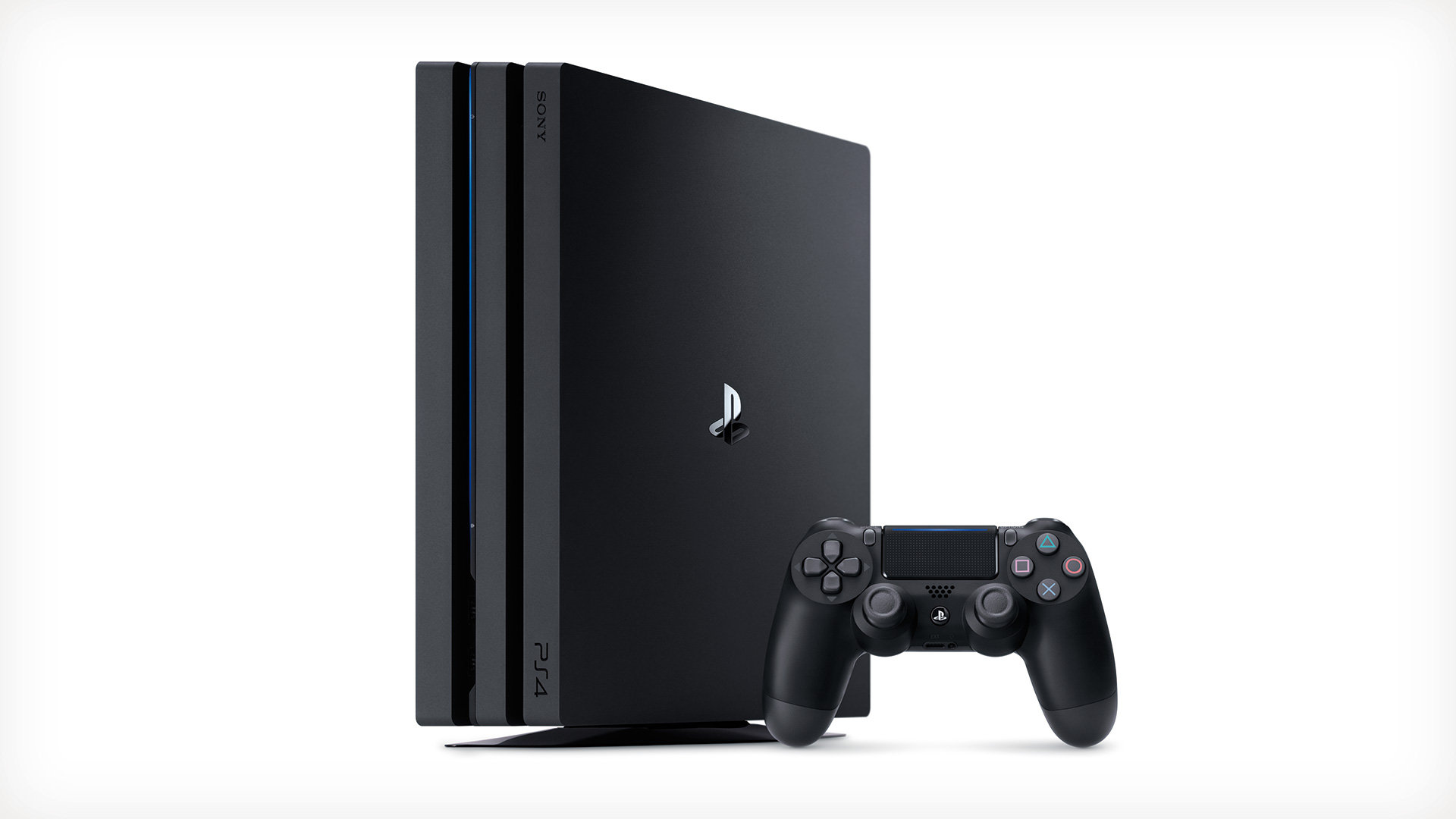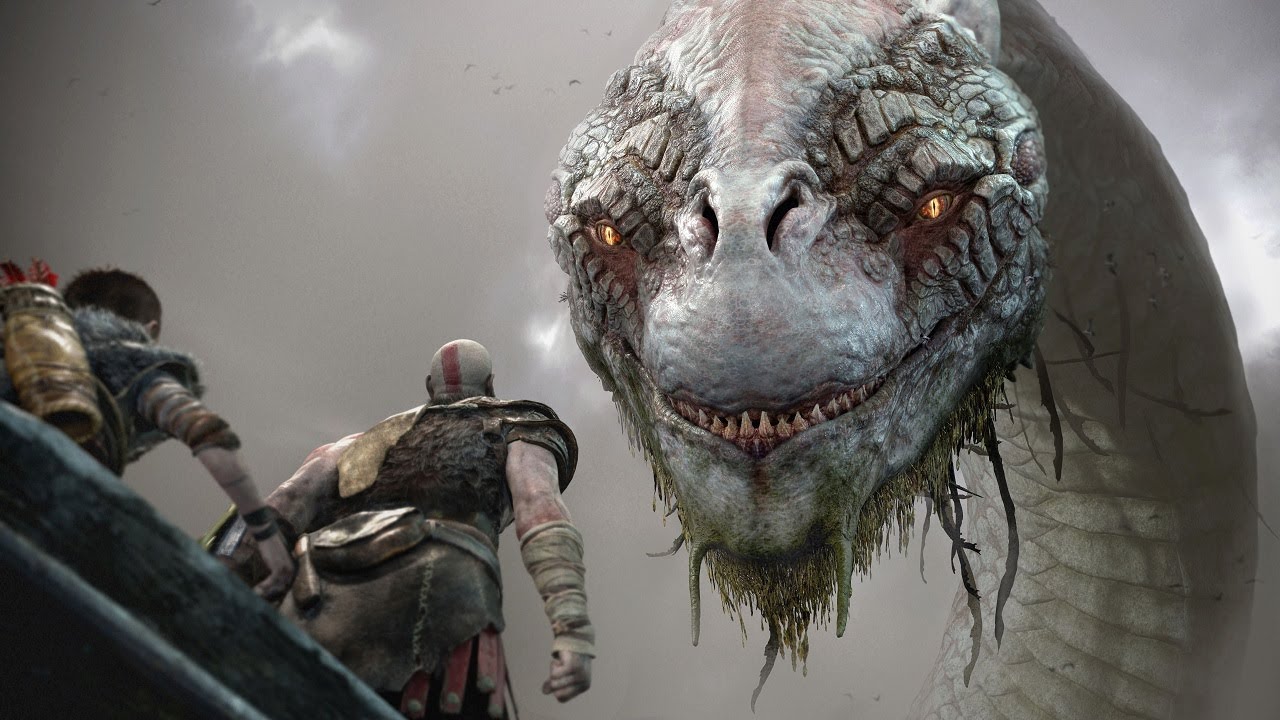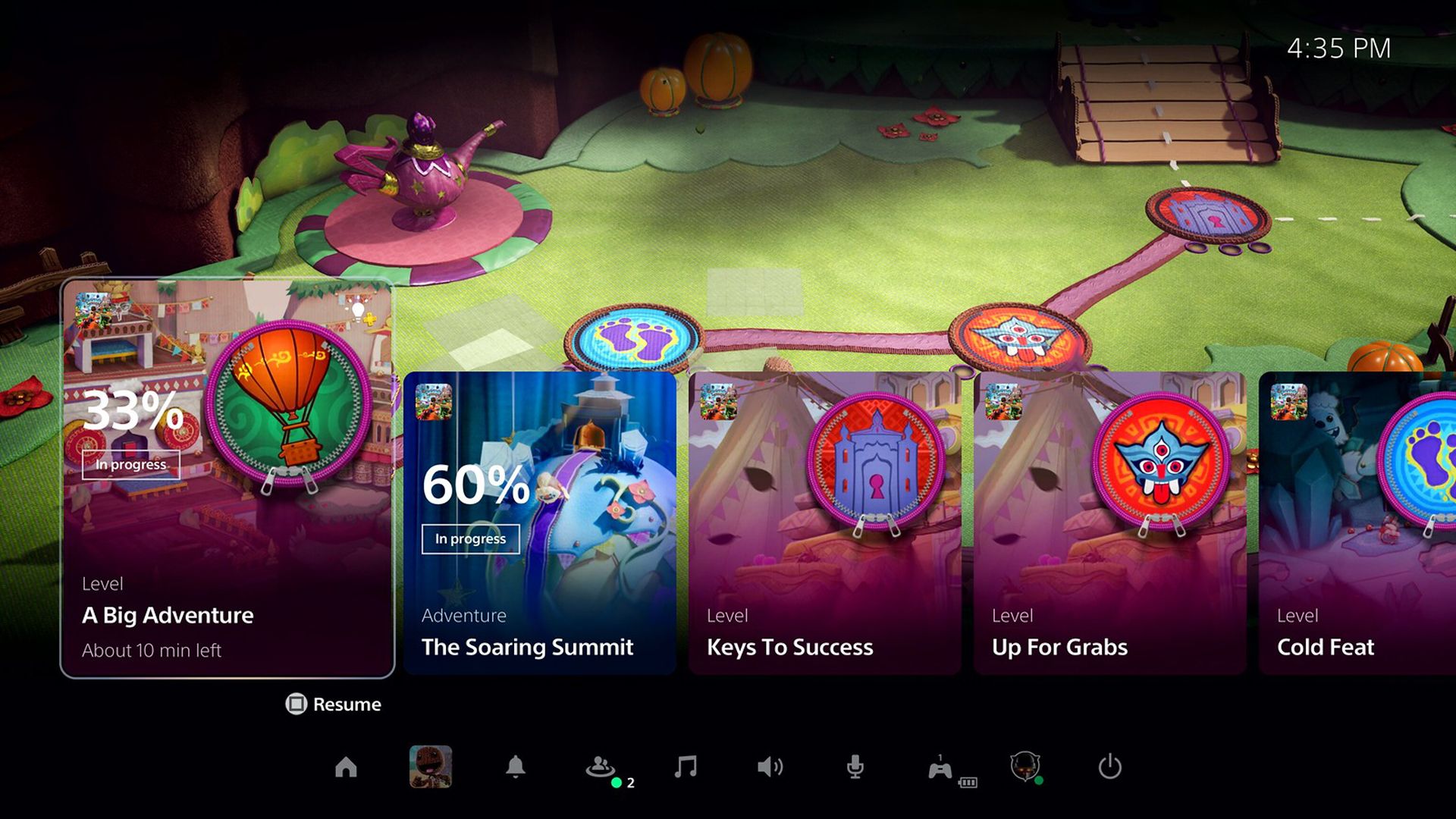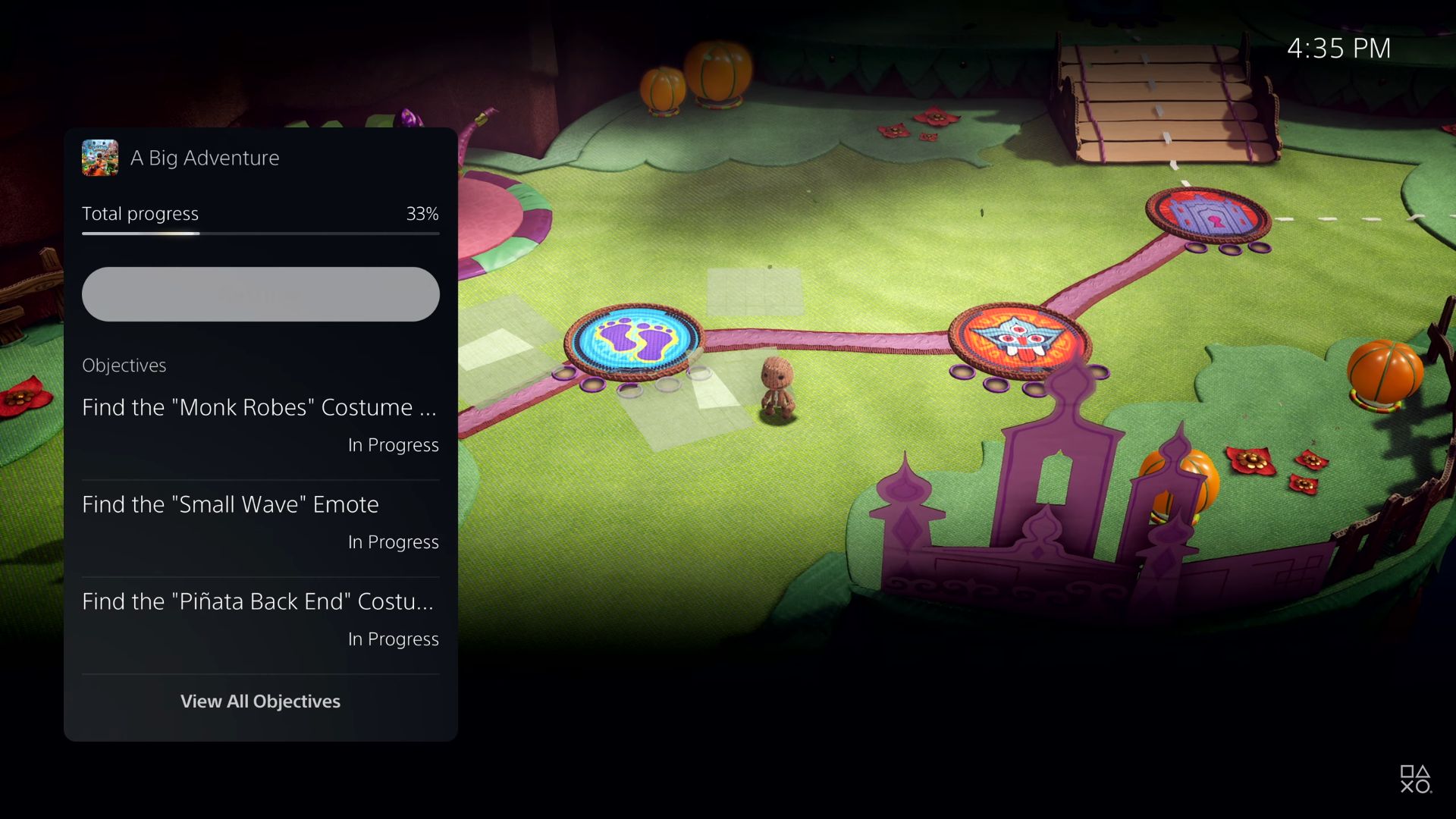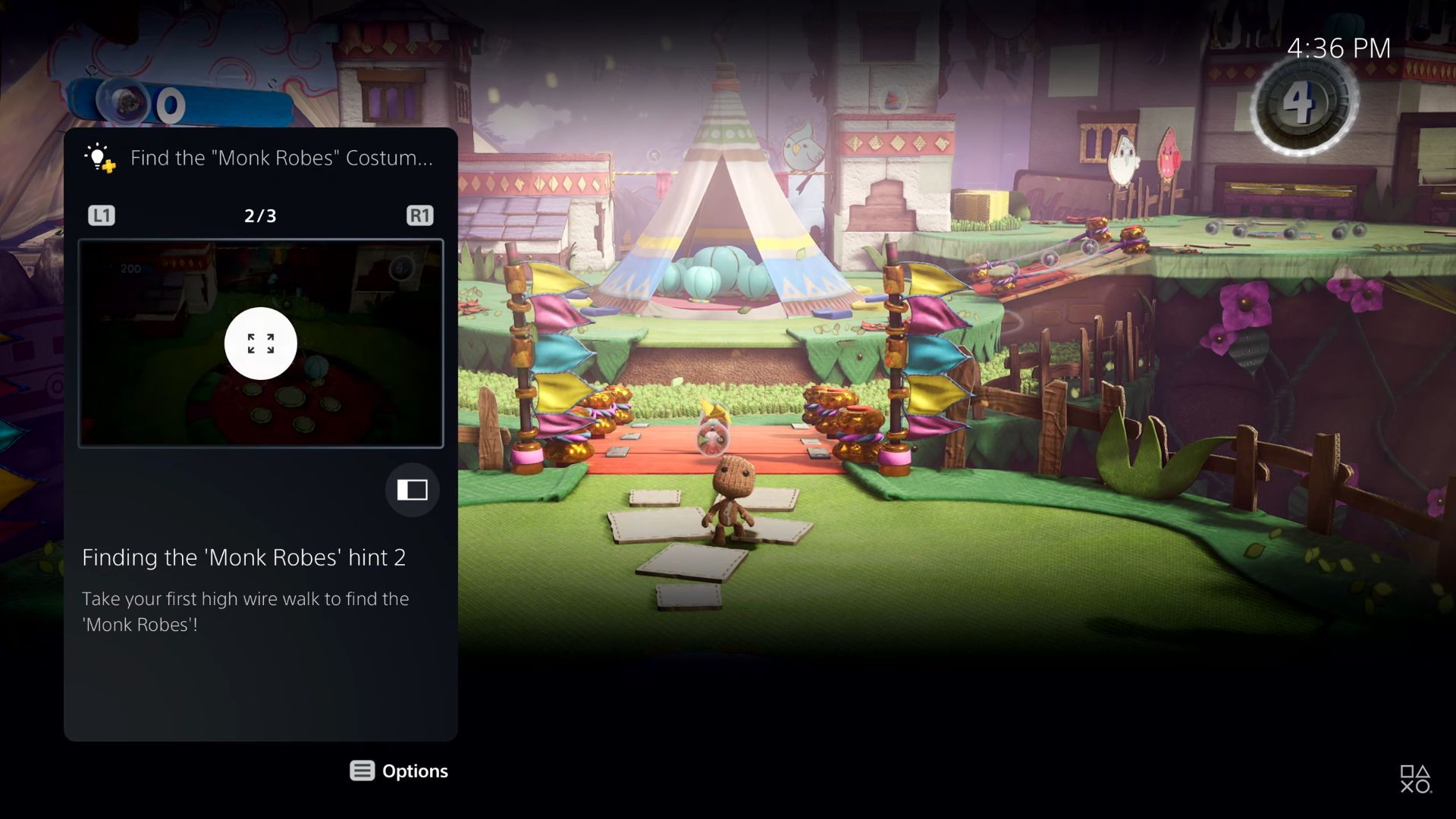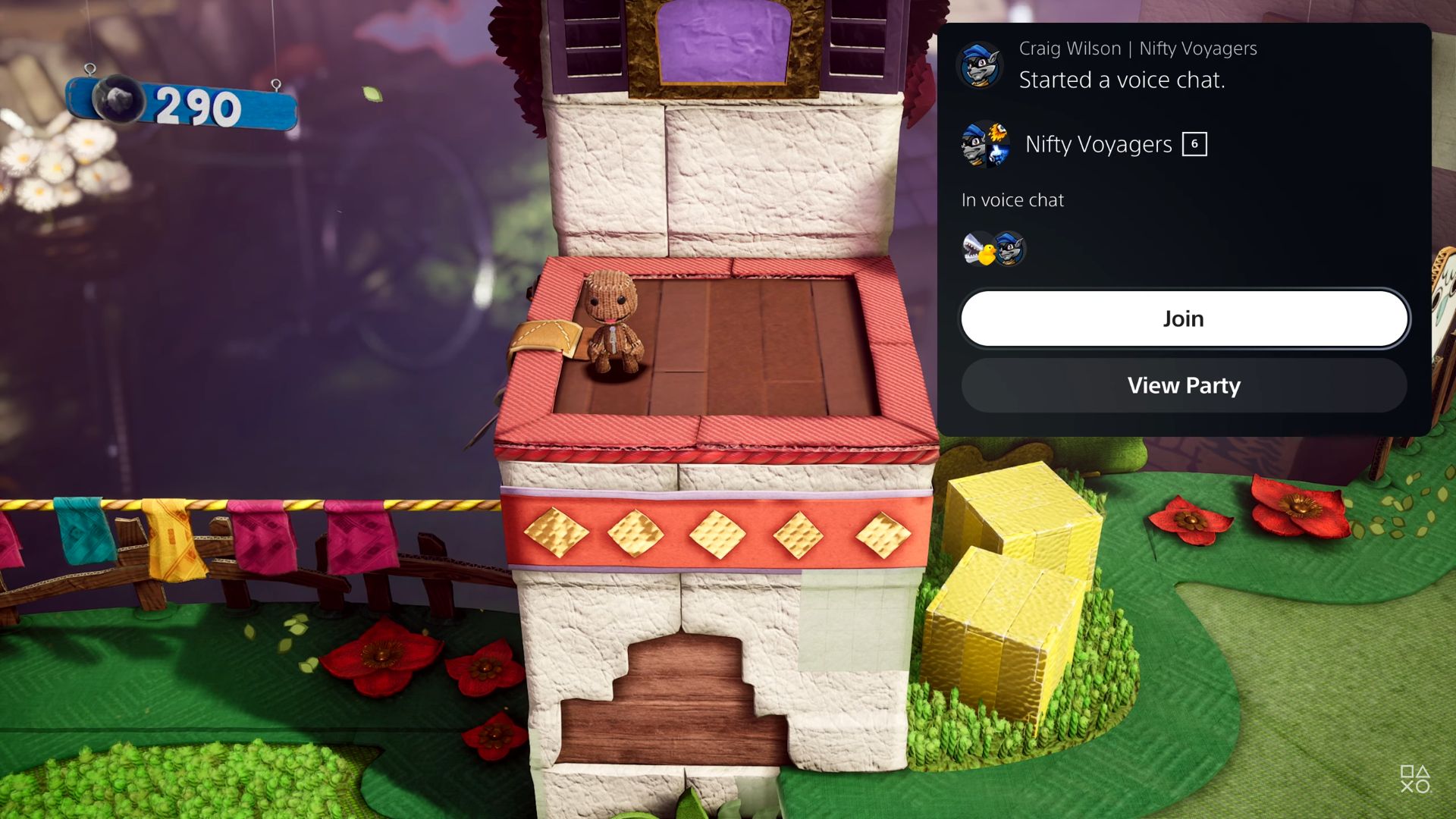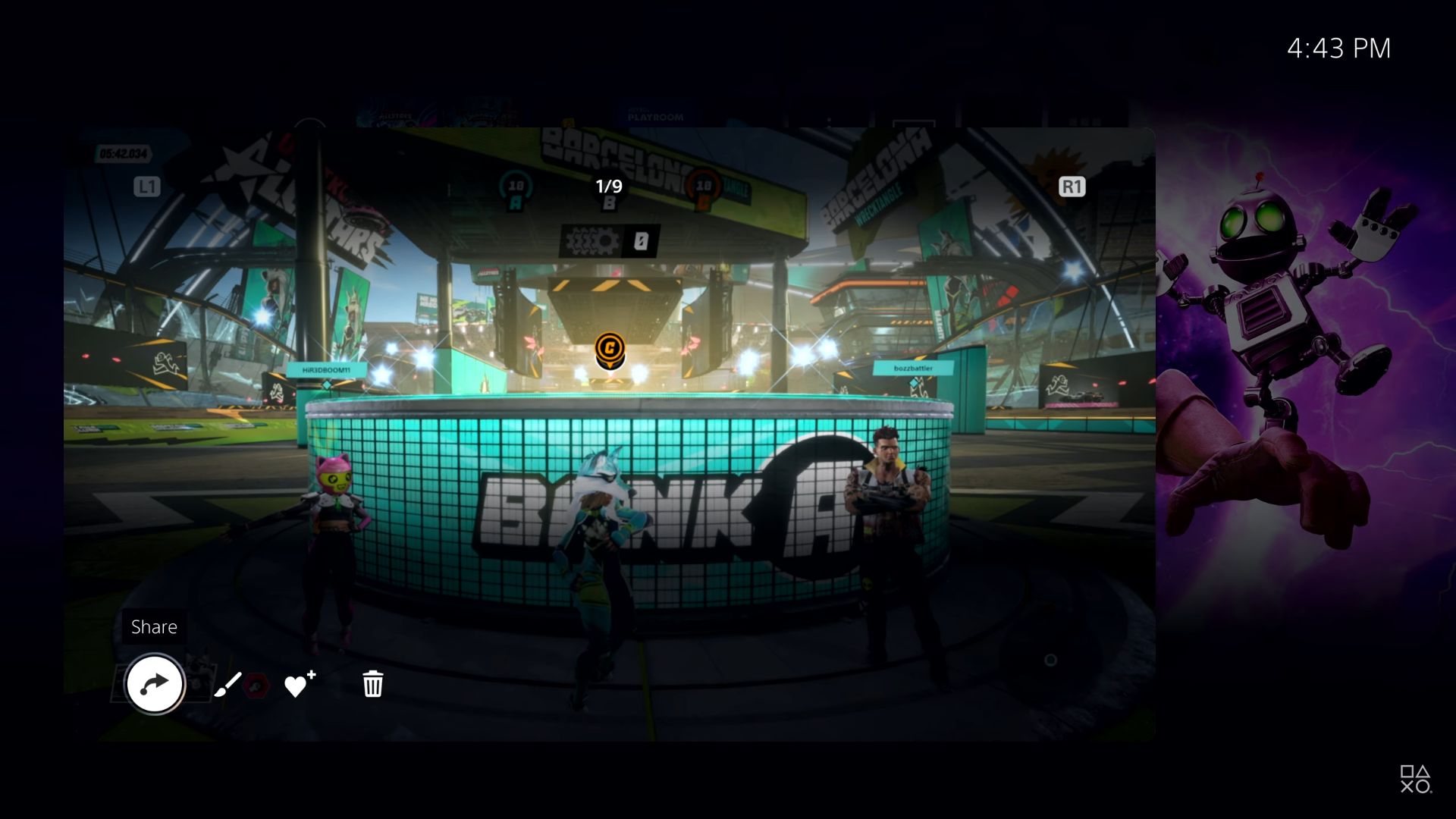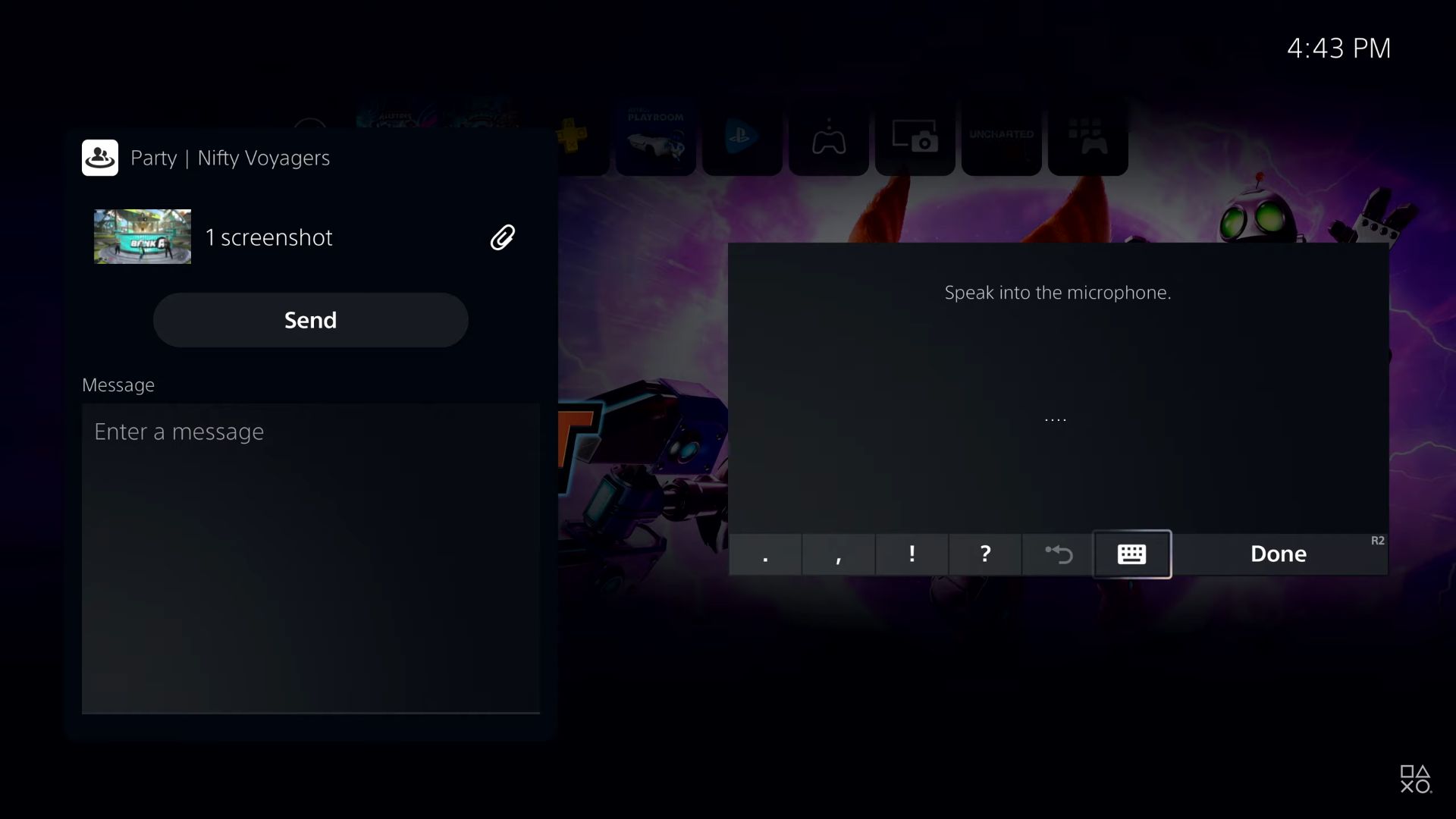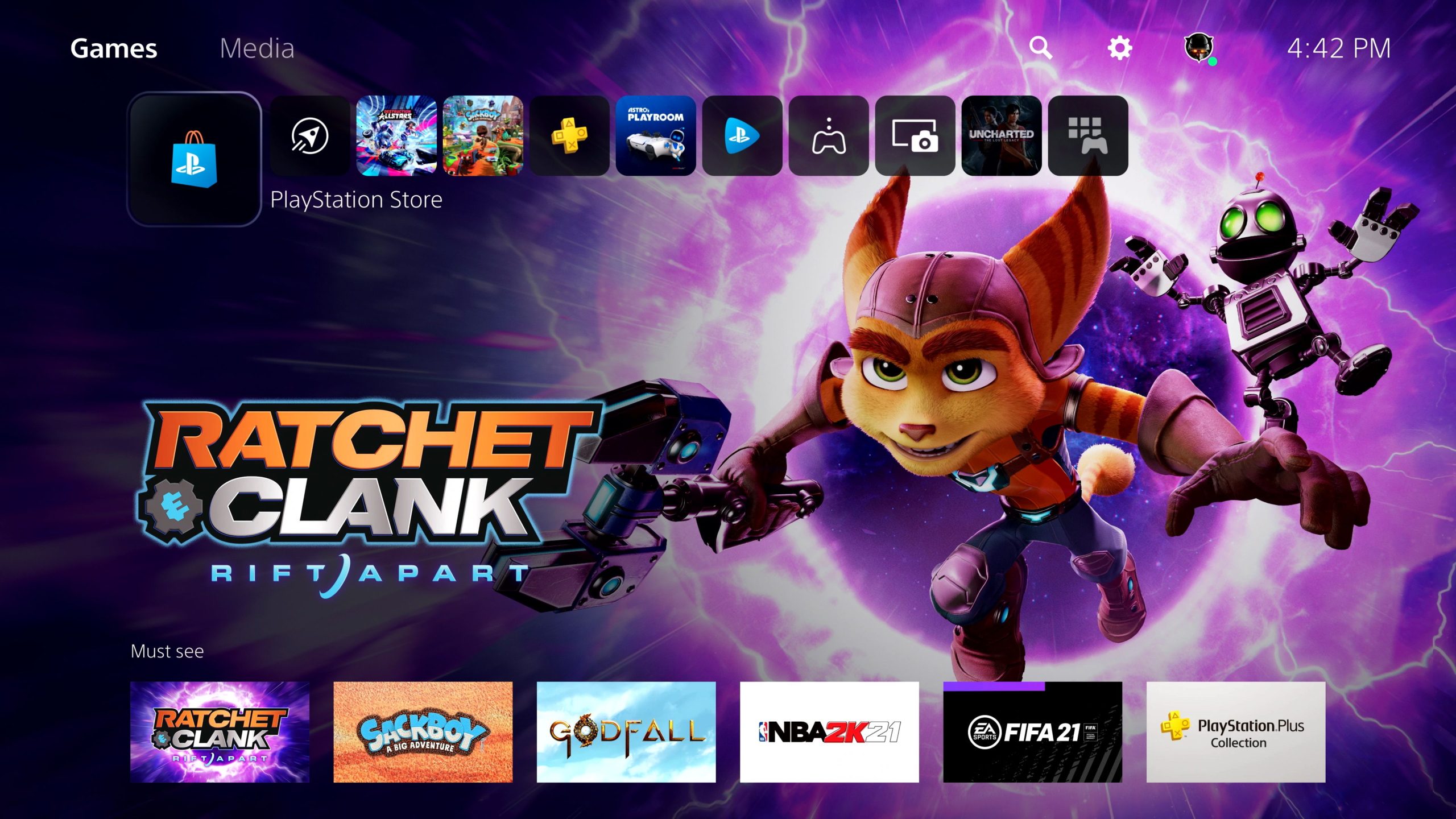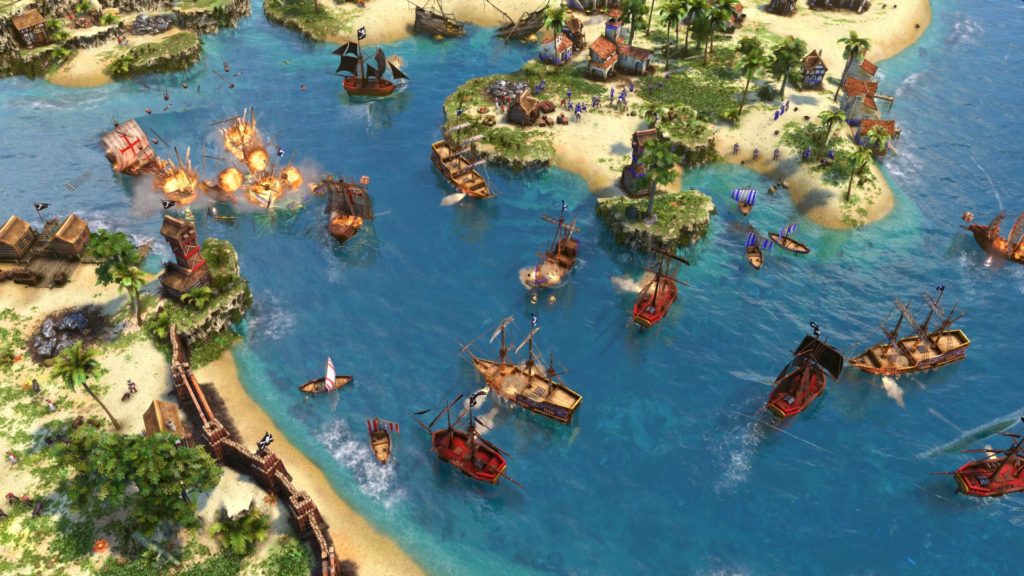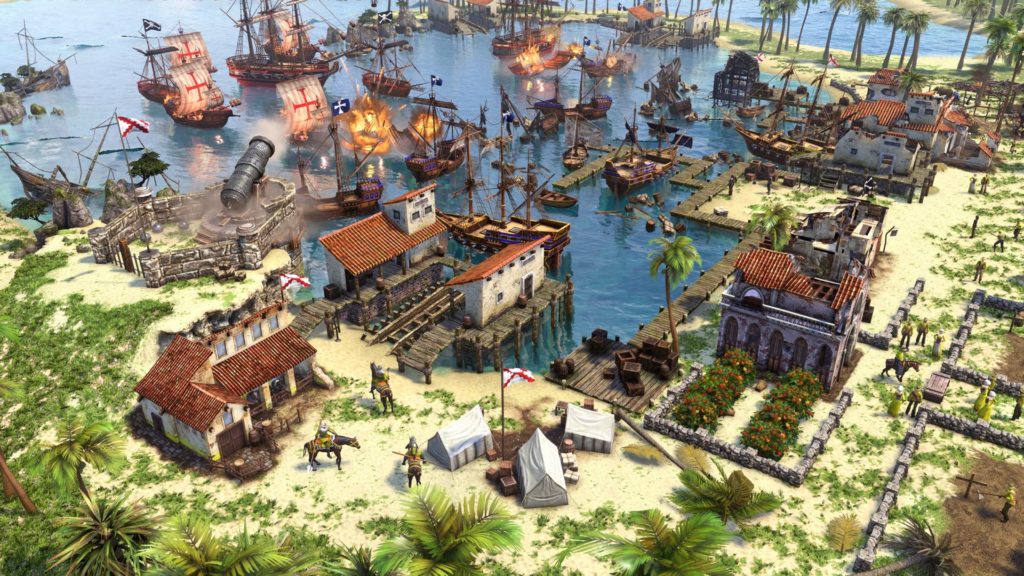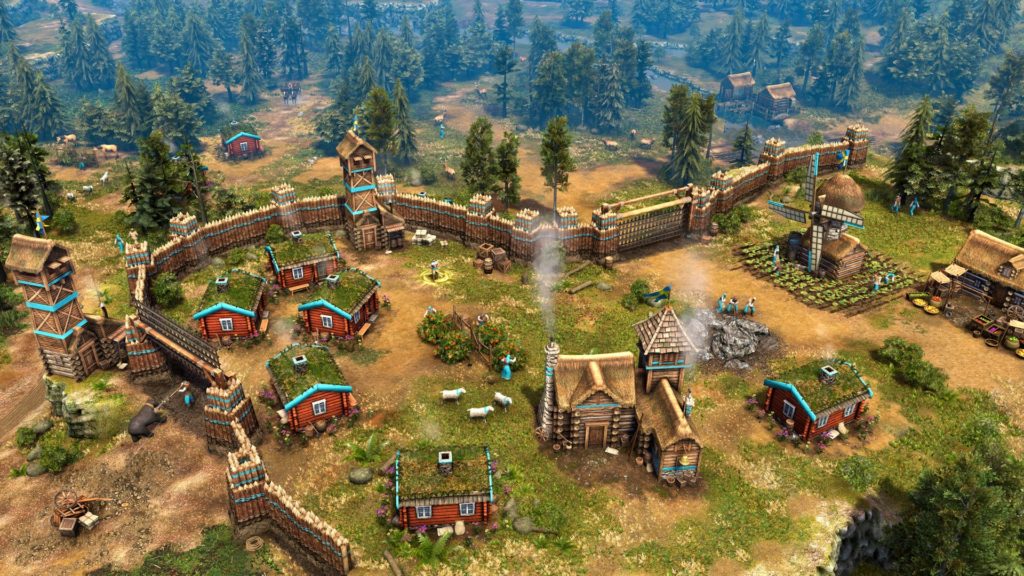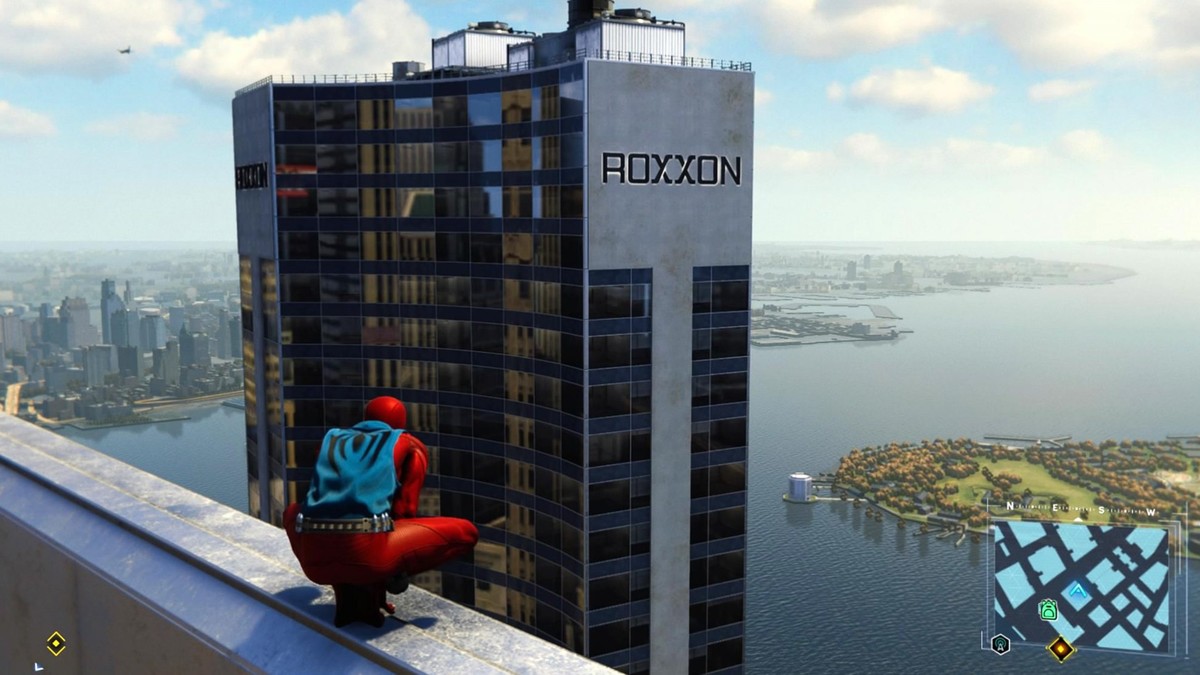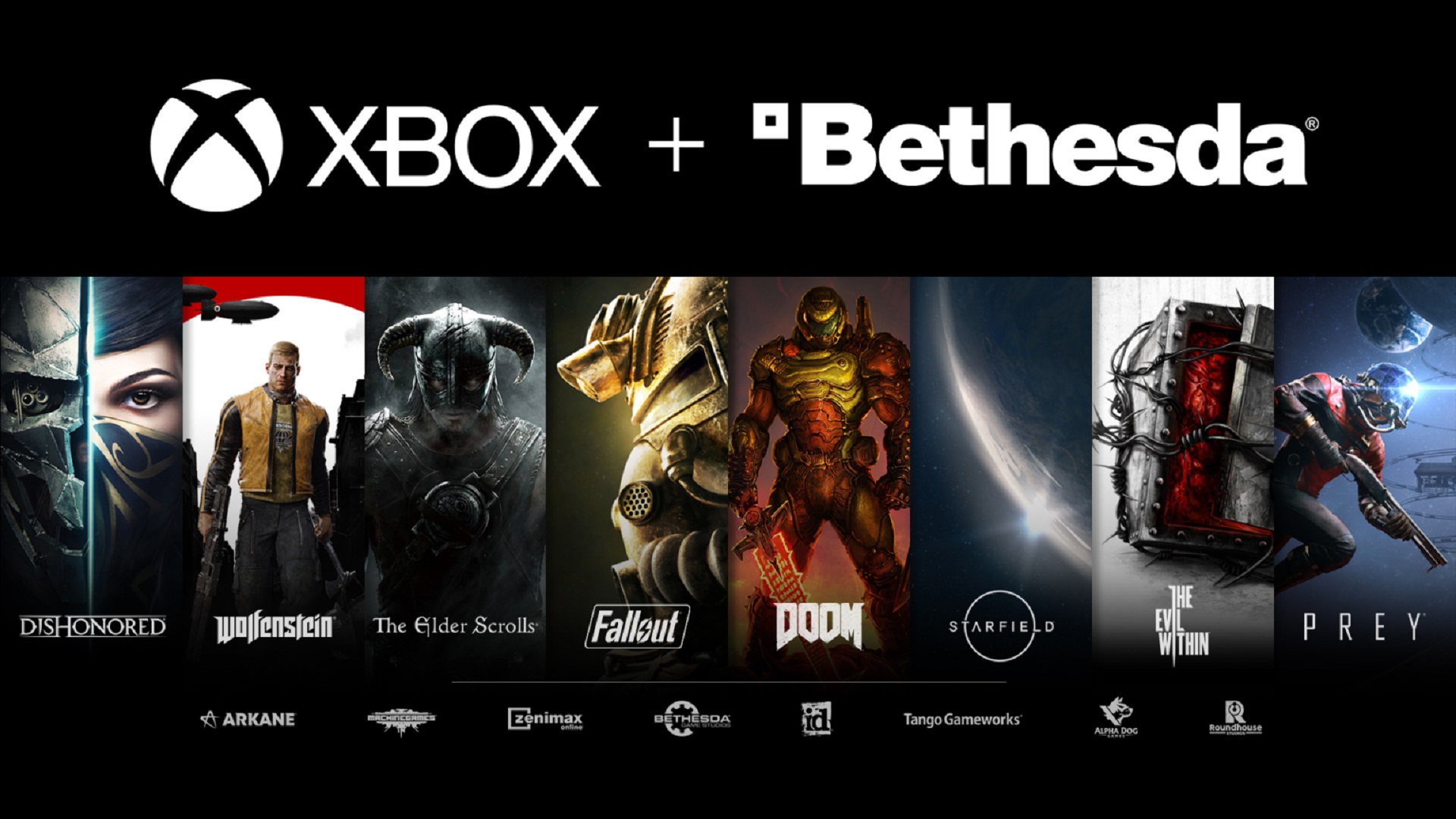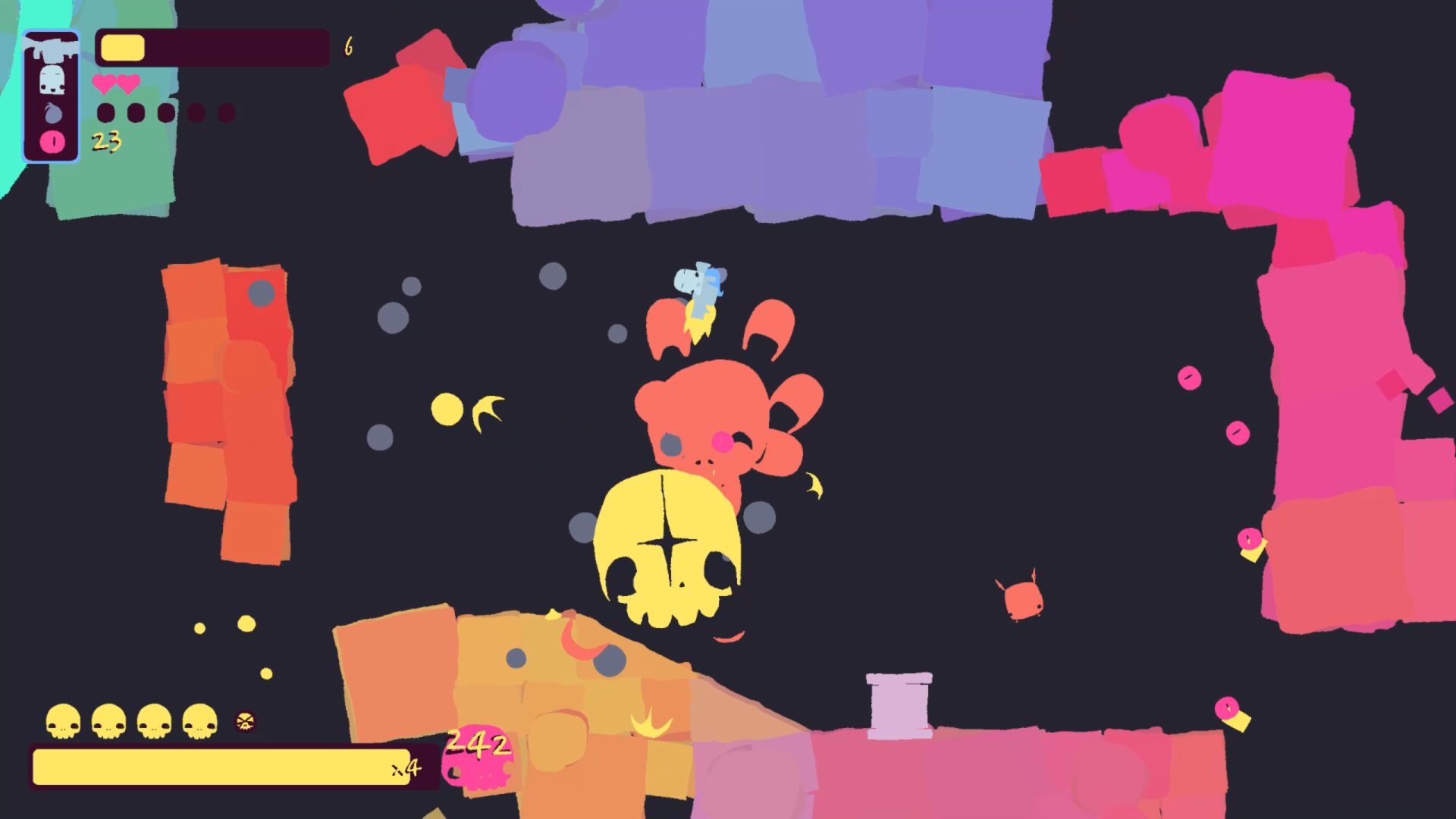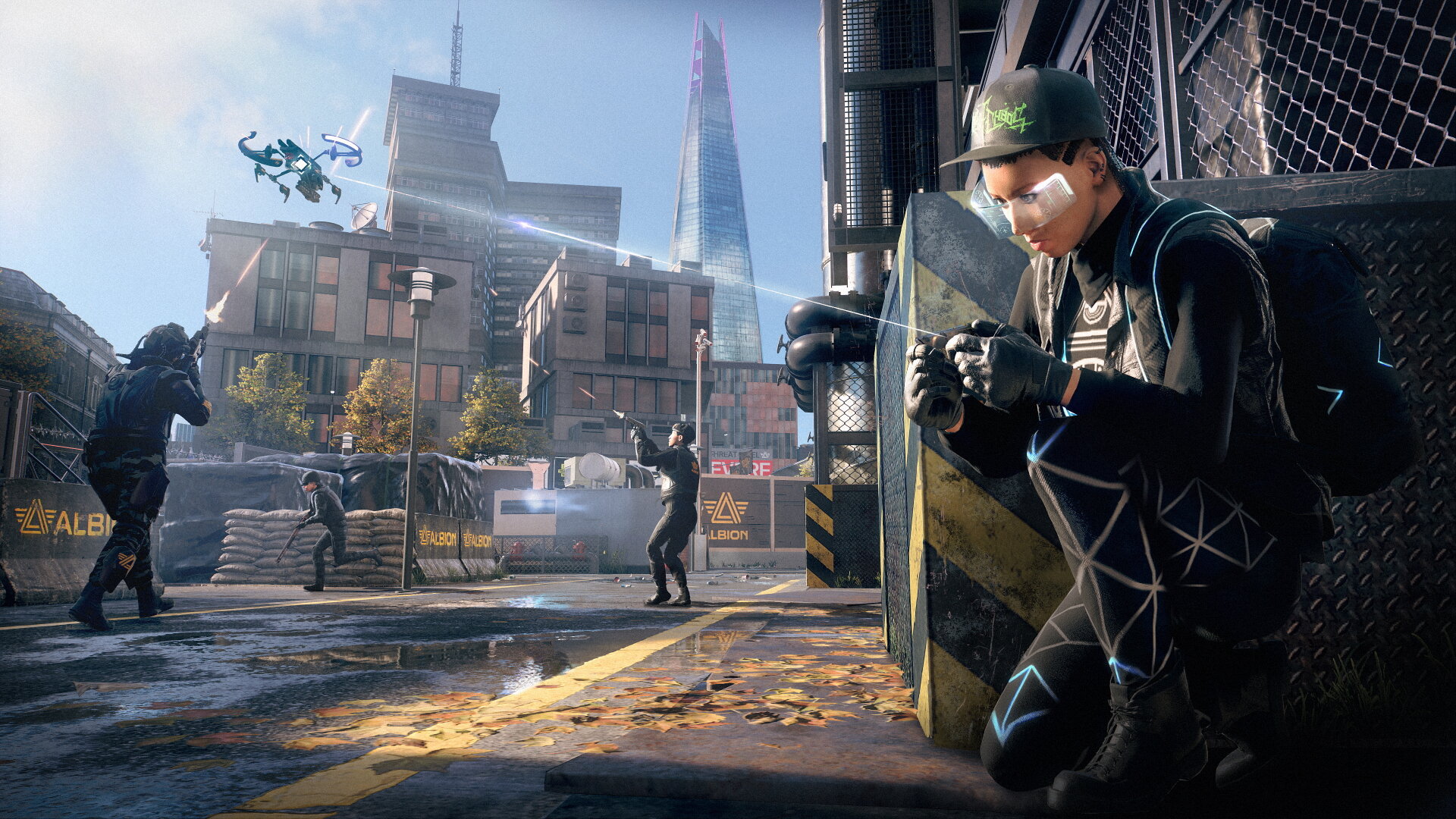Assassin's Creed Valhalla -15 Features You Need To Know
After a well-earned year-off in 2019, Assassin's Creed is soon returning with a game that's set to continue the run of form the series has been in. Valhalla is promising to deliver yet another vast, sprawling open world action RPG, and there's plenty that Ubisoft have revealed about it that's got us more than just a little excited to get our hands on the game. To that end, with less than a month left until the game's launch, in tis feature, we'll be going over 15 crucial details you should know about Assassin's Creed Valhalla.
PREMISE
After having gone further back in the series' timeline than any previous game, first with Origins in 2017 and then again with Odyssey the very next year, Assassin's Creed Valhalla skips ahead once again, set in the 9th century during the Viking invasion of Britain (which is still over 300 years before the events of the first Assassin's Creed). Players will play as Eivor, a Viking warrior who leads clan across the ocean to Britain, to settle the lands and find a new home for themselves. All of this will, of course, be set within the framework of a modern-day storyline, where Layla Hassan will once again return as protagonist.
MORE STORY INFO
The kings and rulers of Britain won't take kindly to the presence of Viking raiders in their borders, as you might imagine, which means players will come up against several foes (and potential foes) in Assassin's Creed Valhalla, including the kingdoms of Northumbria, Wessex, Mercia, and East Anglia. Eivor will negotiate, form alliances, and go to war with these kingdoms as they look to make a new home for themselves in foreign lands.
Meanwhile, British kings won't be the only foes Eivor will have to face. A group of Vikings known as the Sons of Ragnar Lodbrook – followers of the legendary Viking warrior – will also be runnong amok in England, and will be crossing paths with Eivor.
LORE
We've spoken enough about British kings and Vikings and modern-day storylines. What about actual Assassins and Templars? That's what the series is about, after all. Well, the conflict between the Hidden Ones and the Order of the Ancients – which kicked off in Assassin's Creed Origins – is still ongoing, and sometime during Valhalla (probably during the early hours of the game), Eivor will come into contact with one of the Hidden Ones and become involved in this ancient war.
The developers of Assassin's Creed Valhalla have been stressing this one point quite a lot- that fans invested in the series' lore will find plenty to be excited about in Valhalla. There's a pretty large gap between the story told in Origins and the one told in Assassin's Creed 1, so hopefully, this game will bridge those two stories effectively.
EIVOR
So what exactly is Eivor's backstory? Eivor's parents died at a young age, at which point, King Styrbjorn of Forberg took them in and raised them as his own child. That means Eivor also has a brother by adoption, Sigurd Styrbjornson, who is five years older and being groomed to follow in his father's footsteps as a warrior and a ruler, with Eivor as his right hand. The relationship and (possible) conflict between the two siblings might spell interesting things for the story.
CHOOSING YOUR GENDER
Assassin's Creed Odyssey introduced male and female protagonists to the series, giving players the option to play as one of two twins, Kassandra or Alexios. Valhalla's approach is a little different. Eivor is indisputably the protagonist here, but you can change their gender. Valhalla's devs claim that they've found a way to work that choice into the series' lore and how this choice will even function with an Animus, so that's something to look forward to. Meanwhile, once you've made your choice, you're not locked into it, since you can change Eivor's gender whenever you want.
MAP
The worlds and settings of Assassin's Creed games have always been one of the series' biggest strengths, and there's plenty to look forward to with Valhalla as well. Ubisoft have said that its world is going to be "a bit larger" than the world of Odyssey, which was already massive. In Valhalla, England will let you explore the kingdoms of Wessex, Northumbria, East Anglia, and Mercia, within which there will be several cities and towns to visit as well, such as London, Winchester, and Jórvík (which would be modern-day York). Meanwhile, a chunk of Norway will also be included in the map (probably as the area you'll be in in the earlier hours of the game, before setting sail for England).
SIDE QUESTS
One of the more interesting changes Ubisoft are making to Assassin's Creed Valhalla will work is how quests and side quests will work- in that it seems like there are now no traditional side quests, more or less. Narrative director Derby McDevitt described it best when speaking with us in an interview a few months ago. "One of the first things we asked ourselves when making Assassin's Creed Valhalla was, 'does the traditional main quest / side quests format work for a Viking who invades a hostile country?' he said.
"After some deliberation, we made an early decision to change the usual RPG formula drastically and focus on telling more long-form stories with high stakes, sprawling arcs, and huge emotions," McDevitt explained to GamingBolt. "So rather than playing one long main story and, for example, one hundred miniature stories, players will experience many key stories that each have the epic scope of a feature length film. Many of these connect to Eivor's personal journey, others feel more stand-alone, but all are related to Eivor's and their clan's desire to carve out a permanent place of their own in England."
WORLD EVENTS
On top of these multiple sprawling questlines, in Assassin's Creed Valhalla, players will also be able to take on smaller, individual optional quests. These will be known as World Events, and you'll have to chance upon them yourself through organic exploration, since these won't be logged into your quest log or appear on your map.
Speaking to us about the game's new quest structure, McDevitt said, "By embracing this format, it left us a lot of room for smaller and more intimate narrative moments scattered throughout the world, moments we call World Events — countless small little happenings, side stories, and surreal encounters that players may engage with as they see fit. They won't be tracked in your quest log, but they'll tug at your curiosity."
PROGRESSION
With Assassin's Creed now having completely committed itself to becoming an RPG series, you'd expect Valhalla to be juggling a lot when it comes to progression- and that certainly seems to be the case. For starters, instead of traditional levels, players will now have a Power Level, which will be determined by the skills that you have unlocked.
Which, of course, means there will be a deep skill tree system to dive into as well. There will, of course, be an entire loot and gear side of things to manage, while on top of everything, players will also be able to look for Books of Knowledge in the world to unlock new Abilities, which will be deadly attacks that will require adrenaline in combat.
COMBAT
Assassin's Creed's combat has been improving steadily with each game in recent years, and it seems Valhalla looks set to continue that trajectory. Gear is supposed to be a lot more unique, for starters, while Valhalla now also lets you dual wield every single weapon in the game (yes, you can also dual-wield shields). There are also 25 unique enemy archetypes in the game, each of whom will challenge the player in unique ways. Enemy can also use the environment to their advantage, coordinate with each other during combat, and at times even find ways to adapt to how Eivor is fighting.
STEALTH
Given how drastically different Assassin's Creed is now than what it started out as, it's a little hard to remember at this point- but once, Assassin's Creed was all about the stealth. Sure, stealth remains an important part of the series even now, but it's definitely been pushed to the sidelines, while stealth mechanics in the series also tend to be a bit too dated and shallow.
With Valhalla, we're in line for some changes and improvements. Social stealth is returning, for one, and you'll have to make use of it as you look to infiltrate British cities, towns, and kingdoms- they're not just going to let a Viking raider walk in, are they? Meanwhile, the Hidden Blade is back, as are one-hit kills- though they will still require some level of skill with a QTE prompt of sorts.
RAIDS AND ASSAULTS
You wouldn't be much of a Viking if you weren't raiding and pillaging, and it seems there will be plenty of that to go around in Assassin's Creed Valhalla. Raids will see payers gathering a crew of soldiers (that you will be recruiting throughout the game), taking a longship, and then heading to a village or settlement to, well, raid it. Meanwhile, there will also be large-scale assaults in Valhalla, similar to the Conquest Battles in Odyssey, which will be set-piece moments where you will be leading your Viking warriors as you storm fortresses and castles.
CHOICES
Just as it was in Odyssey, players will be shaping the narrative in Assassin's Creed Valhalla with their own choices well. Ubisoft haven't gone into too much detail about this, but they have said that while the story still has to stick to certain beats in order to remain largely historically accurate, choices will play a crucial role in shaping Eivor's personal journey and many other stories throughout the game.
MYTHOLOGY ELEMENTS
Assassin's Creed has always had a hint of fantasy and mysticism, but it's been tapping into that much more heavily in recent years, first with Origins, then even more so with Odyssey, and especially with expansions for both games. Valhalla will be continuing in that direction as well. Its developers have said that there will be plenty of mythological and fantastical elements in the game's world, and though the main, larger story is still very much going to be rooted in reality, there will be several such elements on the fringes, from the massive wolf known as the Black Shuck to the three mystical beings known as the Daughters of Lerion and more.
NEXT-GEN
Like most other major multiplatform games releasing this November and beyond, Assassin's Creed Valhalla is going to be a cross-gen game. It will release for Xbox Series X and Series S on November 10, and for PS5 on November 12. It will run at 4K and 60 FPS on the Series X and PS5, in addition to improvements to clutter density, shadow quality, higher resolution textures, load times, and more. Free next-gen upgrades will also be supported on both, PlayStation and Xbox.
Remothered: Broken Porcelain Review – Truly Broken
One of the things that's been the most pleasing to see in the games industry these last few years is the comeback of the horror genre. For a good few years, it seemed as if developers and publishers in the industry had collectively decided that horror games no longer have an audience, and instead started leaving in more heavily on action-oriented stories and experiences. These last few years, the pendulum has swung back, and horror is back strong than ever.
But while we've seen an influx of incredible games in the genre of late, not all of them have been home runs. Indie developer Stormind Games' Remothered: Broken Porcelain belongs in that category, sadly enough. Acting as a sequel (and at times prequel) to 2018's Remothered: Torment Fathers, a game that, from what I understand, has the reputation of being, at the very least, a solid horror experience. Broken Porcelain had the opportunity to iron out its predecessor's rough edges, double down on its strengths, and deliver something even better, more well-rounded, more confident.
I haven't played the first game, so I can't tell how if Broken Procelain improves upon it. I can tell you what I feel about it in particular though- which isn't anything good. Like so, so many games that swing and miss the way this one does, there are some good ideas in Broken Porcelain, but they're all too often let down not only by rote gameplay, but also by an incoherent mess of a story and by an abundance of frustrating technical issues.
"Remothered: Broken Porcelain has some interesting ideas, but they're all too often let down not only by rote gameplay, but also by an incoherent mess of a story and by an abundance of frustrating technical issues."
In Remothered: Broken Porcelain, you play as Jennifer, a young girl who gets expelled from boarding school, and is sent to serve as a maid at the Ashmann Inn. Things at the inn, however, quickly begin going horribly wrong, and Jennifer finds herself desperately looking for a way out of the inn while trying to stay hidden from people trying to kill her. It's a mess of a plot, and the game does about as good a job explaining it as I did. It hurriedly throws in new elements on a constant basis, never really caring to explain them too much. Characters keep talking about things that it's hard to care about, and the game doesn't do a very good job why you should care about them.
The way Remothered: Broken Porcelain chooses to tell this jumbled, incoherent plot only serves to make things worse. Writing, for starters is clumsy at best, with dialogue that sounds unnatural and far too many conversations that have a tendency to drone on without ever really revealing anything that could be meaningful for the story. Characters themselves aren't anything worth rooting for, while the stilted voice acting sounds like it's been lifted right out of a game that released fifteen years ago. Cutscenes also all too often end abruptly, sometimes with abrupt hard cuts to black, sometimes with the camera suddenly jumping right into gameplay and showing your character from an awkward angle.
I wish Remothered: Broken Porcelain had better storytelling, but sometimes, it does show glimpses of a game that could have been genuinely scary. The way it uses its music and audio effects impressed me at least a few times. It almost made the audio feel like a dynamic part of the experience, and I really appreciate that in a horror game. The environments also mostly look good (though things do get a little blurry when you look closer, character models especially), and Broken Porcelain usually does a decent job of using its music, lighting, and environments to build up some atmosphere.
"Remothered: Broken Porcelain's gameplay is rather bland and tedious."
The actual gameplay, however, is an exhausting mess, and absolutely kills any potential this game may have had as an effective horror title. Remothered: Broken Porcelain puts a lot of its eggs in the stalker horror trope, and as countless genre classics have proven – including recent ones like Resident Evil 2 and Alien Isolation – that can be a powerful tool to create tension and thrills. However, it also hinges on effective execution, which is where Broken Porcelain fails horribly.
Enemy AI, which is crucial in any game that relies on stealth and stalker mechanics as much as this one does, is abysmal. Sometimes, enemies are hyper sensitive to any sound you make, and can even spot you from around impossible corners or through covers. Other times, they're unbelievably dumb, and they might stand still for a couple of seconds and allow you to escape or run circles around them. It's also all too easy to cheese this poor AI and manipulate enemies' movement patters, or how easily and abruptly they often decide to give up looking for you, allowing you to re-enter stealth. It destroys the illusion of tension and horror completely.
Outside of that, Remothered: Broken Porcelain's gameplay is rather bland and tedious. There are some puzzles that tend to be rather straightforward, though the game often has a tendency to be frustratingly vague about what you're supposed to do. Often, the objectives you get (call someone for help, get into the lobby, and the like) don't really much to you, because the game doesn't provide you with enough context for any of it.
"A bevy of technical issues also interferes with gameplay frequently and in consistently frustrating ways."
It doesn't help that a bevy of technical issues also interferes with gameplay frequently and in consistently frustrating ways. For starters, hitboxes and collisions are completely broken. I can't tell you how many times I got stuck on some object, or in the geometry of the environment, even though there was nothing visibly blocking my movement. Several times, this happened while I was being chased by enemies. At times, the enemies would even block me between themselves and simple things like tables and chairs, and before I could scramble hard enough to get myself unstuck, I'd be dead. There are also audio issues (particularly with wildly inconsistent volume), frequent load times, texture pop in, and several other problems, all of which collectively make for a game that is very, very unpolished. Technical issues are never fun to grapple with, of course, but when they actively get in the way of the actual gameplay, the can be particularly grating.
Remothered: Broken Porcelain fails at most things it sets out to do. Its story is a convoluted and incomprehensible mess, its gameplay is bland and boring and let down by poor AI, and all of its technical issues only make things worse. If there are any redeeming qualities here, they're not good enough to make up for all the ways the game keeps finding to frustrate its players. Investing time in it makes about as much sense as its name.
This game was reviewed on PC.
PlayStation 4 – A Generation in Review
For Sony, the PS4 was a do or die situation. The PS3 era was far from successful for them, and due to a number of poorly made decisions, Sony had lost much over the course of the console's life, from a surprising amount of marketshare to large amounts of money. The PS4, however, was a chance for them to get back on top, where they had been with their first two consoles- and they did it with great aplomb.
The era of the PlayStation 4 is coming to an end soon, with Sony ready to let the PS5 off its leash and out into the wild, which means now is the time that we will all be looking at the PS4's life and its many highs and some lows- and boy is there going to be a lot to look at. In plain and simple terms, the PS4 is one of the best pieces of hardware that Sony has put out to date.
That's not because of its technical proficiencies or anything like that- in fact, even when the PS4 first launched in 2013, it was still built on outdated tech. In fact, after the ambitious, eccentric, yet impressive hardware of the PS3, the PS4 did almost a complete 180, going for more standardized tech. That was a conscious move on Sony's part, of course, who wanted to right their wrongs from the PS3 era, not repeat the same mistakes, and above all, make a console that developers would find easy to develop for.
No, the thing that makes the PS4 a jewel in PlayStation's crown is the thing that always matter the most with any console- its library. It's hard to point at a single PlayStation system with a library that's anything less than great (maybe except the PS Vita), but even among them, the PS4 manages to strike an imposing presence.
The biggest reason for that is the fine form that Sony's first party pipeline was in this generation. From Gran Turismo and Twisted Metal in the PlayStation days, to Ratchet and Clank and God of War in the PS2 years, to Uncharted and The Last of Us in the PS3 era, Sony has always had an excellent first party portfolio- one that's clearly been getting over time. And with the PS4, they truly hit their stride.
The sheer number of games first party Sony games that can easily be called among the best of the entire generation is staggering. Bloodborne, Uncharted 4, Horizon Zero Dawn, God of War, Astro Bot Rescue Mission, Marvel's Spider-Man, Dreams, The Last of Us Part 2, Ghost of Tsushima all came along and saw their creators touching new heights in every way possible. Beyond that, there were other first party releases, that may not have had similar universal acclaim, but were great games nonetheless, including the likes of The Last Guardian, Gravity Rush 2, Days Gone, Ratchet and Clank, and many more.
Truly, this is the generation where Sony's first party stopped being consistently great and became consistently outstanding. Studios such as Naughty Dog, Guerrilla Games, SIE Santa Monica, Sucker Punch, and Insomniac all produced some of their best games ever for the PS4. Oh, and speaking of Insomniac, their addition to Sony's first party proved to be yet another excellent buy from Sony.
On top of that, there were plenty of excellent third party exclusives (console exclusives and complete exclusives) on the PS4 as well. Persona 5, Persona 5 Royal, Nioh, Nioh 2, Final Fantasy 7 Remake, and Final Fantasy 14, for instance, stand out as some of the best games in the PS4's impressive library. And, of course, once you move outside the restrictions of exclusivity, there were so, so many more excellent games on the console to dive into.
From games that were the best at what they did – such as the likes of Red Dead Redemption 2 and The Witcher 3 – to flawed yet brilliant experiences like Prey and Destiny, from massive open worlds like Assassin's Creed Odyssey and GTA 5 to horror standouts like Resident Evil 2 and The Evil Within 2, from excellent revivals of beloved series like Wolfenstein and DOOM to indie gems such as Hollow Knight and No Man's Sky, from standout live service titles like Rainbow Six Siege and Monster Hunter World to wonderfully weird games like Death Stranding and NieR Automata.
The range, depth, and breadth of the PS4's library is impressive, to say the least (and shows no signs of stopping just yet, with Sony seemingly planning on continue to support the console for the foreseeable future). The console was well worth the price of admission- which, sure enough, was easier for Sony to do this time than it must have been for the PS3. Right out the gate, the PS4 came out swinging, with Sony announcing that it would launch at a prince of $399 (which, incidentally, was also the price that the PS4 Pro launched at in 2016). Thanks to its competitive pricing (and the blunders that Microsoft were making at the time), the PS4 got off to a great start, and it never looked back.
But, of course, it wasn't all completely rosy. There have been a few bumps along the road during the PS4's life cycle as well. Its notoriously loud fan noise has been one of the most commonly criticized things about the console, Sony's rigid stance on cross-platform multiplayer attracted a fair bit of controversy not that long ago (though it's good to see that those walls have started coming down), while it's also worth remembering that this was also the generation that saw Sony beginning to charge money for online gameplay (though not in free to play games, at the very least).
As most people would tell you though, even out together, the PS4's issues seem quite insignificant, especially when put in context of all the other ways that the console has ben a resounding success. Entering into the generation, Sony had a very clear vision in mind, one driven by a desire and necessity, even) to stop doing what they'd been doing during the PS3 era and not repeat those mistakes. With the PS4, their focus was on games, on being more accessibly to wider audiences through cheaper but still decent hardware, on providing an ecosystem that developers of the industry would want to develop for.
At the risk of repeating myself, it's fair to say that Sony pulled it off quite thoroughly. Whether or not the PS5 will follow a similar trajectory remains to be seen. Sony's first party is stronger than ever, plenty of major third party games have been announced as exclusives, the hardware is much more powerful and capable than the PS4's had been at launch, and even though the pricing isn't exactly cheap, it's not unreasonable either. Early signs suggest that the PS5 has the makings of a great console- that might turn out to be completely untrue a few years down the line, or it might not. Either way, we're at least hoping that it gets off to a strong start less than a month from now.
PS5 vs. PS4 UI – 10 Big Changes You Need to Know
Sony finally revealed that PlayStation 5's user interface in an extensive State of Play video and while every function wasn't covered, there was still a lot of really great stuff to see. Let's take a look at some of these new features and how they differ from the PlayStation 4's UI.
New Home Screen and Control Center
Presented in crisp 4K and HDR, the user interface is sharp and snazzy but not overtly busy. Icons for games and gaming-related functions in the Home screen are smaller and arranged closer to the top compared to the PS4's UI. Hovering over an icon will see its hub expanded, which features a lot of space in the middle of the screen; Trophy progress, price and the game's cover art on the right side; and the "Play" button on the bottom left. Pressing down from the "Play" button allows access to the new Activities tab, official news for the game, video clips, DLC and so on.
But what if you're currently playing something? This is where the Control Center comes into play. When playing a game, hit the PlayStation button and a row of icons, from the Home button and game icon to online friends, the controller and even the power button, will be brought up below. This is also a convenient way to access Activities, screenshots and official news while playing, and doesn't go to a completely separate screen like the PS4.
Activities
You'll notice several colorful cards in the Control Center but what are Activities specifically? They're essentially "gameplay opportunities" and allow for jumping into different elements immediately, like a specific level for Sackboy: A Big Adventure. The card will indicate the total percentage completed along with estimated time left for the various Objectives. But open it up, hit Resume at the very top and you're back into the level immediately. Some Activity cards can also utilize the new picture-in-picture functionality, letting you pin Objectives to the side of the screen while remaining in-game.
It's also worth noting that when playing an online title like Destruction AllStars, you can hop into specific playlists like 8v8, Solos and Challenge Series from Activities. The Control Center can be brought up on the Home screen as well, letting you quickly navigate to any Activities for a game or specific console functions immediately.
Objectives
Another key new feature are Objectives. These are little missions that you can fulfill for a specific level. In the case of Sackboy: A Big Adventure, this could be locating specific costume pieces and emotes. Three Objectives are displayed at a time though there's also a "View All Objectives" option beneath. Essentially, this allows players to more easily hunt down collectibles and other items in-game.
Game Help
And if you're really stuck when it comes for certain Objectives, there's the new Game Help system. Some Activities will offer this and provide hints for certain Objectives. For example, when looking for a specific costume part in Sackboy, Game Help will provide screenshots, directions and even a small little video walkthrough. These can either be viewed in the card itself or pinned to the side of the screen to view while playing. Game Help will be available for PlayStation Plus subscribers for some PS5 titles.
Screen Share
Joining parties is a lot more intuitive on the PS5. It's possible to join or view a party from an interactive notification, which is easily accessed via the PlayStation button and, once again, doesn't take you out of the game. It's also easier to hop into a party from the Control Center thanks to Activities. However, even more interesting is the new Screen Share function. This allows for viewing games that other people are playing, which can be pinned to the side of the screen as you continue to play your own game. This is a real game-changer for co-op titles with friends able to share their screen when stuck or requiring assistance.
Join Multiplayer Games Seamlessly
If some friends are already in a multiplayer match, say for Destruction AllStars, then it's much easier to join than before. Simply open the Control Center on the PS5, navigate to a Card which shows the match in progress and join with a single button press. This will immediately open the game up and let you jump into a match. The sheer speed of everything is incredible thanks to the PS5's SSD.
Screenshots and Video
The Create button can be used to capture screenshots and record video, much like the Share button on the PS4. However, it opens up as a small tab at the bottom of the screen instead of the left-hand side. Furthermore, screenshots and video are captured at up to 4K resolution. These can then be edited and shared to platforms like Twitter or parties via messages. One particularly nice feature is the spoiler function. If the person viewing the media hasn't unlocked the Activity showcased and it may contain spoilers as per the developer, there will be a spoiler warning attached.
Voice Dictation for Messages
Favorite parties for sending messages and media can be made so even if you're not interested in hopping into voice chat, you can still participate in a party. But when composing messages, you don't have to rely solely on the on-screen keyboard. Voice dictation for multiple languages is supported – press the Microphone button, record your message and send it off. So you can stay out of voice chat and still keep up with the conversation at a reasonable pace!
Explore
Back in the Home screen, just left of one's games is the Explore icon. This collates all of the official news from PlayStation along with any games you're following, from new details and announcements to trending media. Sony noted that the feature would be tested more in the US at launch and not everyone would have access to it on day one. Still, as a means for quickly viewing all of the latest news for PlayStation games and services while also making it easier to view all of their related media in one place, this is a pretty convenient feature.
PlayStation Store
Finally, we have the PlayStation Store. Go left from the Explore icon and you'll notice something. That's right – the PlayStation Store no longer opens up as its own separate app like on the PS4. On the PS5, it's fully integrated into the console, making it easier to browse for games and even access features like PlayStation Plus Collection for available backwards compatible PS4 titles. Though Sony didn't show off too much of the new PlayStation Store, it did indicate that there would be room for personalization.
Age of Empires III: Definitive Edition Review – To the New World
When it released in 2005, Age of Empires III was considered something of a disappointment. I should know; I still have an original copy. Part of it was expectation: Age of Empires II is a masterpiece and remains one of the best RTS games ever made. Age of Empires III is… fine. Or at least it was at release. But when you go from a masterpiece to just fine, disappointment is bound to follow. Part of it was the setting: the colonial era just didn't feel as interesting as the middle ages; the Home City mechanics, while good in theory, never really felt good; putting deck building into an RTS was weird; maps were smaller; there were fewer campaigns and civilizations; the addition of firearms made melee units almost worthless; and while Age of Empires II followed real historical figures like Joan of Arc and El Cid through real battles, Age of Empires III's campaigns were historical fiction. Age of Empires III isn't bad – but it never felt like Age of Empires. Even Ensemble knew this: they tried to change the game's name before release. Obviously, that didn't work.
Rather than view Age of Empires III's shortcomings as a problem, however, developers Forgotten Empires and Tantalus Media seem to have viewed it as a challenge. Age of Empires III: Definitive Edition is less a remaster and more an overhaul that makes a deeply flawed game significantly better without fundamentally changing the parts of it that worked.
"The Definitive Edition looks gorgeous. The game supports 4K resolutions and features rebuilt 3D assets. Almost everything has been retouched, from textures to lighting and particle effects, animations, and physics."
Let's get the obvious stuff out of the way first: the Definitive Edition looks gorgeous. The game supports 4K resolutions and features rebuilt 3D assets. Almost everything has been retouched, from textures to lighting and particle effects, animations, and physics. Age of Empires III is fifteen years old, and you can occasionally see it when you look at the game's character models, but this is a very pretty game. The game's sound design and soundtrack have also been enhanced, with new music for each civilization. Age of Empires has always had an excellent soundtrack, and these new tracks and enhancements make everything sound better. All of this stuff is expected from a modern remaster, but that doesn't change the impressive work that the studios have done to make Age of Empires III look and sound the best it ever has.
As impressive as the visual and audio improvements are, they pale in comparison to the work that's been done on the gameplay. The most obvious improvement has been made to the game's UI, which now supports 3 different options to choose from, including the setup that appeared in the original game. While I think the best UI setup here is the one the game defaults to because it looks like a UI that you'd see in a modern RTS, it's nice that the developers have given folks the ability to choose what they want. The addition of progress bars over buildings, more zoom levels, new naval formations, and the ability to check your tech tree in game, which was, bafflingly, not in the original release, are just icing on the cake.
Okay, so it looks good and it sounds good. In terms of gameplay, Age of Empires III plays a lot like it used to. You select from one of the 16 civilizations on offer and turn your small base into a thriving settlement. Workers chop down trees, mine metal, and collect food, which can be used to build buildings, train armies, and advance to the next age, which unlocks new technology and bonuses. As you play, your settlement will gain experience, which can be used to request shipments from your home city. These shipments can vary from food and supplies to soldiers or permanent buffs and they're essential to keeping your army in fighting shape, upgrades researching, and your settlement growing. Success means exploring the map, securing valuable resources, finding hidden treasures protected by dangerous NPC, and establishing trade routes while fighting off your enemies or establishing strategic alliances. In true Age of Empires fashion, you don't have to win via military conquest. You can achieve victory by holding more than half of the trade routes on the map, killing the enemy Regent in Regicide mode, or holding the hill in King of the Hill. Age of Empires III unfortunately doesn't feature the varied win conditions of its predecessors – you can't just build a Wonder and hold it for a couple hundred years – but it does give you more options than more traditional RTS games.
"Okay," you might be saying. "That sounds a lot like the same game that released in 2005. What are these new gameplay improvements you're talking about?" Well, the first is that all of the Home City cards/shipments are unlocked off the bat this time around, so you don't have to level up to build the deck you want. The Definitive Edition also features several pre-built decks for each faction, so you can just jump right into the game if you're like me and don't want to think about deck building in an RTS. The AI has also seen significant improvements: it will build more diverse armies, use hit-and-run tactics, and retreat from losing fights. There's also a the new "Extreme" difficulty if you're looking for a serious challenge.
Forgotten Empires and Tantalus Media have also added two new modes to the game: The Art of War and Historical Battles. The former is a series of challenge missions meant to test your skills and help players bridge the gap between the single-player and multiplayer modes. The game gives you the basics via an introduction video and missions objectives, and offers hints if you're struggling while you play. You're scored based on how well you do, so there's incentive to stick with it, and it's a good way to learn the game's deeper mechanics. Historical Battles are essentially mini-campaigns that drop you into real events, much like earlier games in the series. If you missed the more history-focused campaigns from Age of Empires II, this is the mode for you.
The Definitive Edition also features all 8 of the campaigns from the original game and its expansions. There's 54 missions here altogether, so you'll have plenty to do. The developers haven't been resting on their laurels here, either. A lot of the content here has been revamped and improved to meet modern standards, which makes the game more fun to play. By far the most work has been done to the Native American civilization. Their portrayal in the original game was historically inaccurate, both in terms of narrative and gameplay. The studios have taken these criticisms to heart, having a writer of Native American descent fix the errors and rewrite the entire second act of the campaign. In addition, they've also redone several of the faction's mechanics, which simultaneously makes their representation of Native Americans more accurate and more compelling to play.
"The Definitive Edition also adds two new civilizations, the Incas and the Swedes, who bring completely new playstyles to the table."
The Definitive Edition also adds two new civilizations, the Incas and the Swedes, who bring completely new playstyles to the table. Age of Empires III's various factions never felt quite a big as II's did, but the flip side is that they all feel unique, each with their own variation of buildings and units that add up to completely different playstyles. The Chinese, for instance, recruit their armies in bulk and by forging alliances with European nations, while the Native Americans trade for furs instead of mining and can call on special buffs to enhance everything from their unit's combat prowess to the speed at which they train. Each of the fourteen different factions feel different, and adding two more into the mix is icing on an already excellent remaster.
If the game's extensive campaign and skirmishes against the new and improved AI aren't enough for you, you can also check out the game's multiplayer. The game has been rebalanced and features matchmaking, ladders and leaderboards, several new maps, a spectator mode, and rebalanced gameplay. There's even mod support. I wasn't able to test the multiplayer pre-release, but it is built on the same backend as the Definitive Editions of Age of Empires and Age of Empires II.
All told, Age of Empires III: Definitive Edition continues Forgotten Empires' trend of releasing remarkable remasters. There's been a ton of work done here, an Age of Empires III is a better game because of it. It doesn't fix everything wrong with Age of Empires III. The game's pacing often feels remarkably slow, especially in the early game. The campaigns, while better, aren't as good as Age of Empires II's, and though the Home City isn't a terrible idea, the focus on deck building and experience often feels out of place. It just doesn't fit. And while each civilization feels different, they also feel remarkably small, lacking both the grandeur and variety of Age of Empire II's civilizations.
" If you don't already like Age of Empires III, this edition is unlikely to entirely change your mind. I still don't love I, but I do like it better than I did in 2005."
Age of Empires III was a daring game when it came out; it still is. Ensemble Studios had the bravery to experiment with their most successful franchise after their greatest successes, and that deserves praise. Age of Empires III does a lot of things right, but its willingness to experiment means it gets a lot wrong, too. How you feel about the game will largely depend on how much you like the concept of the Home City, and your tolerance for its particular brand of historical fiction. I still don't particularly care for several of the campaigns, though the addition of Historical Battles goes a long way. I still don't love the Home City, though it's undoubtedly better than it used to be.
Age of Empires III remains a deeply flawed game, but Forgotten Realms and Tantalus Media have done an excellent job of remastering it. If you don't already like Age of Empires III, this edition is unlikely to entirely change your mind. I still don't love I, but I do like it better than I did in 2005. The additions of the Historical Battles, new civilizations, and revamped campaign fix a lot of the game's issues. But several of Age of Empires III's issue are baked into the game foundation. It would have been impossible to fix them without fundamentally changing how the game worked. Forgotten Realms didn't do that. What they did was polish what was there to a mirror sheen, and add things that fill in the gaps of what we expect from an Age of Empires game. Age of Empires III isn't Age of Empires II, and it never will be. But this version is very, very good. And for a game that many view as a disappointment, that's more than good enough.
This game was reviewed on PC.
Marvel's Spider-Man: Miles Morales Lore – Who are the Tinkerer and Roxxon Corporation?
It's often said that a superhero is only as good as their villains, and it's hard to think of many superheroes that have a rogues gallery as good as that of Spider-Man. Insomniac have used this lineup of villains to great effect in their own take on the Spidey universe so far, with the likes of Doctor Octopus, Mister Negative, Electro, Rhino, and many more making strong appearances in 2018's Marvel's Spider-Man.
It's exciting to think about what villains we might be facing off against in the sequel- but before that, there's something else to look forward to as well. Marvel's Spider-Man: Miles Morales launches this November, and though its Miles in the driving seat this time around, we're still curious about who the bad guys in this story will be.
So far, Insomniac have revealed a fair bit of details on the game's narrative setup. Like any good Spider-Man story, it looks like this game's story will put plenty of emphasis not only on Miles as Spider-Man, but also on Miles as, well, Miles (or at least we hope it does)- just as the 2018 game did with Peter Parker. As far as Miles is concerned, he's been training with Peter for a year and has fully stepped into the role of Spider-Man. His mom is campaigning for City Council, which means he's got plenty going on in his personal life.
But, of course, being Spider-Man (or a Spider-Man, at least), he doesn't have too much time for a personal life. Marvel's Spider-Man: Miles Morales is going to see Miles encountering his first real challenge as New York's new protector, which will come in the shape of a gang war between Roxxon Corporation and a high-tech criminal organization known as the Underground, who are led by an engineering and mechanical genius known as the Tinkerer.
These are names that will be familiar to many Spidey fans- Roxxon and the Tinkerer have appeared as antagonists in many Spider-Man comics and stories. Roxxon Corporation, in fact, has often come up against other Marvel superheroes as well, including the likes of Captain America and Iron Man. The company has been notorious for its single-minded efforts to basically increase their profits- for which they seem to stop at nothing, often even resorting to backing or outright facilitating large scale violence.
In the comics, Roxxon Corporation has at various points had a sample of the Venom Symbiote, worked with Doctor Octopus, and caused plenty of nuisance for Spider-Man. Though Roxxon Energy Corporation didn't have an outright role in the story of Marvel's Spider-Man, the company is obviously a known quantity in this universe- in fact, you can even see their logo and their own building in Manhattan.
The question, of course, is- how much of an emphasis will Marve's Spider-Man: Miles Morales' story place on the corporation? With it and the Tinkerer both being set up as antagonists, will the latter end up taking more of the limelight, or will the story delve deeper into the shady dealings of Roxxon as well? If it does, it could find ways to rope in some other villains in interesting ways, perhaps even set up more villains still for appearances in future games.
Oh, and speaking of the Tinkerer, he has historically been one of Spider-Man's more interesting villains. What's interesting about him is the fact that he doesn't really have any real superpowers. All he works with is his ingenuity when it comes to engineering and mechanics. The Tinkerer (or Phineas Mason) is a master inventor, and he's often provided deadly weapons to various villains and supervillains from across the Marvel universe.
Marvel's Spider-Man: Miles Morales' take on the Tinkerer looks to be significantly different from how he's usually been portrayed, however. For starters, Insomniac's Tinkerer is a female version of the character, and given that she's leading an army of criminals equipped with high-tech weaponry, she is also clearly taking on a much more active antagonistic role than the Tinkerer usually does.
However, it does seem like there is some reference from Marvel's own universe that Insomniac might be taking cues from for their take on the Tinkerer. In Marvel's Ultimate Marvel imprint from the early 2000s, the character was overhauled quite significantly. For instance, Elijah Stern, not Phineas Mason, is the Ultimate version of the Tinkerer. Stern is a former employee of the Roxxon Corporation, goes after his former boss, Donald Roxxon, to get revenge for getting fired, and also hired other villains like Vulture and Killer Shrike in the process.
Stern eventually winds up being forced to work for Nick Fury at S.H.I.E.L.D., but he still finds ways to go about his villainous ways. Not only does he try to use his Spider Slayer robots to kill Spider-Man, when the Green Goblin (aka Norman Osborn) approaches him to make new weapons for the Sinister Six, Stern agrees. Eventually Stern is attacked by the Prowler, who breaks into his lab to interrogate him about Norman Osborn, and then kills him. The Prowler, of course, is Aaron Davis, the uncle of none other than Miles Morales.
The Ultimate version of the Tinkerer has ties to Roxxon Corporation and ties to Miles Morales' version of Spider-Man, so it's easy to see why we're assuming Insomniac may have turned here for inspiration. The whole central conflict of Marvel's Spider-Man: Miles Morales is centred around this gang war between Roxxon and an army led by the Tinkerer- or that's what triggers it, at least. It will, however, be curious to see how closely this sticks to the source material.
Clearly, the Tinkerer in this game, a female version of the character is neither Phineas Mason nor Elijah Stern, so it's hard to gauge just how much Insomniac are going to tap into stories from the comics, and how many new twists of their own they're going to introduce. Given Insomniac's track record with portraying Spider-Man characters (and villains in particular), we can't help but be optimistic about the Tinkerer's role in the upcoming game.
If there's one thing that's been abundantly clear since the fay Marvel's Spider-Man came out over two years ago, it's that Insomniac are building their own larger Spider-Man universe, and are setting up various stories, characters, and arcs that will play out in future games. There was plenty of that going on in the 2018 game and even its expansions, and we're hoping the same will be true for Marvel's Spider-Man: Miles Morales. With the Tinkerer and Roxxon Corporation, it certainly seems Insomniac have the tools to do just that.
Star Wars: Squadrons Guide – How to Divert Power and All Mission Medals
It's not quite like the space combat titles of yore but EA's Star Wars: Squadrons presents a pretty good X-Wing and TIE Fighter experience overall. Key among its mechanics is the ability to divert power. This allows you to send power to specific parts of the ship when needed.
When starting out, your ship will have a Balanced power set-up, which means every component is receiving an equal amount of power. Diverting power to the engine is done by pressing Left on the D-Pad or "1" on PC. This allows for increased speed and when completely maxed, it will charge the ability to speed boost. Diverting power to weapons is done by pressing Up on the D-Pad or "2" on PC. This increases blaster recharge speed and allows for building up an overcharge ability.
To divert power to shields, press Right on the D-Pad or "3" on PC. Along with increasing the recharge speed of shields, it also helps build up the overshield ability. Press Down on the D-Pad or "4" to return to a Balanced power set-up.
Power should be diverted based on one's situation. When damaged, for instance, it's a better idea to divert power to the engine instead of shields to get away quickly. When you've got the drop on an enemy, get them weak first and then divert power to weapons to finish them off. Managing these systems is the key to victory.
All Mission Medals
Each mission in the single-player campaign has a set of medals to earn. While they're not tied to unlocking components or currency, they do contribute to unlocking Trophies and Achievements. Check out the videos below for tips on earning all of the medals in the campaign.
Bethesda Games Won't Need To Be On Other Platforms For Acquisition To Be Worth It, Says Spencer
It was in September, just before pre-orders for the Xbox Series X and S went up, that the video game industry was shaken with the announcement that Microsoft has purchased Bethesda in full with all their IPs and studios. While we obviously won't see the effects of that for another year at least, it is something that essentially realigns the market as we know it. There's strong feelings many ways about it, but one question remains: will Bethesda titles be on other non-Microsoft supported platforms? There has yet to be a concrete yes or no answer there, but it seems the head of Xbox is leading us down the road to an eventual no.
While logic dictates that all of Bethesda's output will now be exclusive to the Xbox-ecosystem (which includes as of now the Xbox One, Series X, Series S, PC and Xbox Cloud Gaming), some have hoped that it's possible Microsoft will still allow Bethesda titles on other platforms because, apparently, the plan is still to allow Bethesda to publish titles under their brand. Xbox Head Phil Spencer has also danced around the question, saying that exclusivity would be on a "case-by-case basis."
In an interview with Kotaku, Spencer once again addressed the question. When asked if they would have to put Bethesda titles (specifically in relation to the next Elder Scrolls title) on other platforms to make the mammoth $7.5 billion dollar worth it, he dismissed the idea. He said that the addition of Bethesda's many titles and IPs to the likes of Game Pass and Xbox Cloud Gaming would extend the reach and audience of those programs. That is all it needs for the deal to "work for" Microsoft.
"I don't want to be flip about that. This deal was not done to take games away from another player base like that. Nowhere in the documentation that we put together was: 'How do we keep other players from playing these games?' We want more people to be able to play games, not fewer people to be able to go play games. But I'll also say in the model—I'm just answering directly the question that you had—when I think about where people are going to be playing and the number of devices that we had, and we have xCloud and PC and Game Pass and our console base, I don't have to go ship those games on any other platform other than the platforms that we support in order to kind of make the deal work for us. Whatever that means."
So while again Spencer does not directly answer the question, it seems reading between the lines that the answer we're going to end up on is to not expect Bethesda titles on PlayStation and Nintendo platforms going forward. Though, one could argue that Spencer, or anyone at Microsoft, not answering the question directly is strange. Is it possible that part of the deal is not decided, yet? While we know the amount that was paid for Bethesda, we have no idea what the finer details could be and what concessions where made on both sides to make it happen.
Though, that is probably wishful thinking more than anything. It's probably for the best to just assume going forward that if you want to play anything under the Bethesda umbrella, you'll need something Xbox-related.
Art in Hearts' GoNNER 2 releases on October 22nd, according to the developer and publisher Raw Fury. It will be available on Xbox One, PC and Nintendo Switch while also launching on Xbox Game Pass. It will arrive for PS4 and Xbox Game Pass for PC down the line.
GoNNER 2 follows the first game and sees Ikk helping death after a strange presence invades his lair. This means more crazy (and aesthetically appealing) colors and procedurally generated environments to go with the roguelike platforming action. Levels are nonlinear, meaning you can plot your own path throughout all of the madness.
Players can also unlock new guns and upgrades along with new heads. There are various secrets and mysteries to discover, though what exactly those are remains to be seen. Check out the release date announcement trailer below for a better idea of the gameplay and stay tuned for more details on GoNNER 2 in the coming week.
Watch Dogs: Legion Confirmed To Be Playable Offline; Cross-play Coming In Future Update
October will end with Ubisoft's next entry in the Watch Dogs franchise, Legion. It'll mark an ambitious move for the series, as it will allow you to recruit anyone to your cause, all while promising a strong story and unique enough characters. We'll have to wait to the month's end to see if it manages to reach those heights, but in the meantime, we got a tidbit of info that will make some happy.
In a Reddit AMA, Producer Lathieeshe Thillainathan fielded questions about the game. One answer he gave that's sure to be relieving to many is that the game does not require an online connection to play, meaning you'll be able to play the game offline if you wish, even if some online-specific features will obviously be limited. When asked about cross-play for the game's multiplayer, which you can read more about through here, he said that while it will not be at launch, it will come in a patch that should come in the Year 1 update for the game. You can read the full AMA through here.
Watch Dogs Legion will release on October 29th for most major systems. For a breakdown of everything you'll need to know about the game before release, we have you covered through here.
